Livestock
 The livestock industry in New York totals $2.4 billion. For livestock marketing, New York ranks 39th for cattle and calf production, 20th for egg production, 24th for chicken production excluding broilers, 30th for hog and pig production, and 25th for sheep and lamb production. Our Specialists are able to help livestock producers by offering research-based programming and individual consultations.
The livestock industry in New York totals $2.4 billion. For livestock marketing, New York ranks 39th for cattle and calf production, 20th for egg production, 24th for chicken production excluding broilers, 30th for hog and pig production, and 25th for sheep and lamb production. Our Specialists are able to help livestock producers by offering research-based programming and individual consultations. Relevant Events
Boots in the Barn: Cornell Dairy Research Updates
January 13, 2026
January 20, 2026
January 27, 2026
February 3, 2026
February 10, 2026
February 17, 2026
February 24, 2026
NY Pork Producers Connection Breakfast - Geneseo
January 17, 2026 : Pork Producers Connection Breakfast - Geneseo
Geneseo, NY
Webinar: Converting Old Dairy Barns into swine Facilities
January 21, 2026 : Webinar: Converting Old Dairy Barns into swine Facilities
What Did we Learn About Internal Parasites in Small Ruminants this Year?
Amy Barkley, Team Leader & Livestock Specialist
Southwest New York Dairy, Livestock and Field Crops Program

In 2025, our team evaluated 10 sheep and goat farms in the spring and fall for levels of parasites and parasite resistance to our deworming classes. The results of this study, including tips on reducing worm burdens on-farm, are shared here.
Mooving through Calving: Recognizing Labor Signs and When to Help
Katie Callero, Dairy Management Specialist
Southwest New York Dairy, Livestock and Field Crops Program
Great calving management has always been important for herd health, productivity, and profitability. It has become especially important in today's economic landscape with the high prices of beefXdairy calves and replacement heifers. To protect these high-value animals and prevent costly vet visits or complications, producers should be able to identify and respond appropriately to each stage of calving covered in this article.
Expansion of (Asian) Longhorned Tick in New York

The Longhorned tick, formerly known as the Asian Longhorned tick, is establishing populations as it moves north and west across the state. This tick has the potential to be lethal to livestock. This articles reviews the newest sightings and what to do if you happen to identify one.
Selecting Replacement Heifers: Building a Productive Cowherd for the Future

Now, more than ever, selecting the most productive and advanced heifer calves for replacements can result in higher profitability, lower inputs, and better longevity in your brood cows. Continuously selecting for the best heifers each cycle will lead to genetic advancement of your herd, even without known EBVs. This article from Oklahoma State University Extension helps producers understand what to keep in mind as they select their replacement heifers.
Governor Hochul Announces Two Grant Opportunities
Governor Hochul has announced two grant opportunities to help address the impacts of climate change and protect water quality. Funding is available in four tracks: Livestock Management (alternative waste and precision feeding management), Adaptation and Resiliency, Healthy Soils, and Agricultural Forestry Management. Contact your local Soil & Water Conservation office for more information.
Who Invited Knapweed?
Katelyn Miller, Field Crops and Forage Specialist
Southwest New York Dairy, Livestock and Field Crops Program

Knapweed is an aggressive weed that spreads rapidly and reduces the quality of fresh and baled forages. Controlling it however, is not a simple answer. Check out this article for more information about the weed and tips on how to manage it.
Grants & Incentives for New York Agriculture
By Farm Credit East
There are a number of grants and incentives available for Northeast agriculture businesses, but learning about their availability and navigating the application process can be a challenge. To help with this, Farm Credit East has released an update to its report identifying federal, regional and state grants, loan guarantees, and other incentives available to assist Northeast producers of all types and sizes.
This post is an excerpt from the document, focusing on funding opportunities available in New York. Find a full list of opportunities, including sector-specific opportunities for states including, but not limited to New York, see here.
Determining Forage Inventories with Pen and Paper
Amy Barkley, Team Leader & Livestock Specialist
Southwest New York Dairy, Livestock and Field Crops Program

Computer-based forage inventory calculators are excellent tools, but a good ol' pen and pad of paper can help you achieve the same result. This article walks you through calculating a forage inventory step-by-step, while also providing an example to follow along with.
Budgeting and proposing operational changes to or with senior management
By Jason Karszes
On more and more dairy farms every year, employees play integral roles in day-to-day operations, decision making, and problem solving. In these roles, ideas for changes to operations and for capital investments are generated. While these ideas might be quite important to the middle manager for their area, across the farm other opportunities in support of the overall priorities and mission of the farm also need to be considered.
Proposing change to the leadership of the farm, or as part of the leadership team, is typically an essential step to improve farm operations. Developing proposals in support of the change can help with identifying all the potential risks and returns and decision-making by the senior management team. Several key areas to address in the proposal are laid out below.
Video Project: Renovating Dairy Facilities into Hog Facilities
Amy Barkley, Team Leader & Livestock Specialist
Southwest New York Dairy, Livestock and Field Crops Program

Our team is looking for farms that are either using or looking to transition dairy barns into hog facilities. We will provide a one-on-one consultation about the renovations that you've done or are planning to do, and we'll record footage that will go into a series of educational videos for producers.
Safe Production, Storage, and Feeding of Baleage
Amy Barkley, Team Leader & Livestock Specialist
Southwest New York Dairy, Livestock and Field Crops Program

Making baleage is an alternative to dry hay, especially when labor is limited or there aren't enough rain-free days to get dry hay down to the proper moisture. While advantages exist, there are additional considerations in the harvest, storage, and feeding of this product vs dry hay to ensure that a high quality, safe product is produced and maintained.
Sharing PRO-DAIRY's Dairy Market Watch resource
Kate McDonald Polakiewicz, Farm Business Management
Southwest New York Dairy, Livestock and Field Crops Program
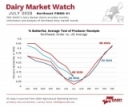
In case you aren't aware of this resource, PRO-DAIRY's Dairy Market Watch provides monthly information and analysis of Northeast dairy market trends. Just released are the July 2025 data.
Welcoming Kate, our Farm Business Management Specialist
Kate McDonald Polakiewicz, Farm Business Management
Southwest New York Dairy, Livestock and Field Crops Program

Kate McDonald Polakiewicz has joined our team as Farm Business Management Specialist and will be offering programming in financial management, production economics, business planning, and market analysis.
Preventing Fires in Baled Hay and Straw

Baling dry hay in SWNY can be a risky business when it comes to baling at the correct moisture for safe storage. Spontaneous combustion needs only a few variables, including moisture levels exceeding 20% and stacked bales. Baling under appropriate conditions, properly drying the hay, and making sure the hay remains dry go a long way to keeping your investments safe.
Cornell Deer Worm Fact Sheet
Deer Worm, or Meningeal Worm, is a parasite affecting sheep and goats across NYS and the Northeast. The worm can cause paralysis and self-inflicted flesh wounds. An alternative treatment protocol established by Cornell University researchers can improve the outcome of treating animals with clinical infections.
Survey for NYS Fiber Farmers for Future Research and Programming

This short survey through the CCE in partnership with the Hudson Valley Textile Project is for anyone raising sheep, alpacas, goats, or other fiber animals in New York State. Your input will help shape future efforts to make fiber farming more sustainable, visible, and profitable. Participants are entered to win a $200 visa gift card.
Cornell's Animal Health Diagnostic Lab - A Resource for NYS Livestock Farmers
Amy Barkley, Team Leader & Livestock Specialist
Southwest New York Dairy, Livestock and Field Crops Program

As part of its mission, Cornell's Animal Health Diagnostic Center (AHDC) offers valuable diagnostic services to New York State livestock producers. They can evaluate freshly dead animals, blood, and tissue samples to determine the cause of illness or death in your herd or flock.
Dealing with Hot Weather

Regardless of what critters are in your care, it's important to reduce stress on them. Remember to also take care of yourself during this heat wave!!
Meet John, our Team's Summer Field Technician

We're excited to have John on our team for this summer as we work around the region! If you see him out and about, don't hesitate to say hello!
Small Ruminant Dewormer Drug Classes
Amy Barkley, Team Leader & Livestock Specialist
Southwest New York Dairy, Livestock and Field Crops Program

Deworming is something all small ruminant producers face, but with so many trade names on the market, it's sometimes a surprise to realize that there are only three classes of active ingredients. Using an active ingredient that works on your farm can help overcome parasite challenges, and knowing which trade name falls into which class can help you make smart purchasing decisions.
Can Feeding Time Alter Birthing Time?
Amy Barkley, Team Leader & Livestock Specialist
Southwest New York Dairy, Livestock and Field Crops Program

Research indicates that feeding cattle on a later schedule can delay overnight calvings, but in sheep and goats, later feedings can cause them to give birth in the wee hours.
Ag Safety and Health Springtime Preparations

Spring is one of the busiest times of the year on a farm. Even if things are busy, keep health and safety to the forefront of what you do.
Coccidia and Small Ruminants
Amy Barkley, Team Leader & Livestock Specialist
Southwest New York Dairy, Livestock and Field Crops Program

While coccidia is a common financially damaging parasite in small ruminants, early identification and environmental management can help reduce its effects.
Internal Parasite IPM Project for Sheep and Goat Producers Looking for Farms!
Amy Barkley, Team Leader & Livestock Specialist
Southwest New York Dairy, Livestock and Field Crops Program

Amy Barkley is heading a project that explores the development of whole farm internal parasite IPM programs across the region. We're looking for farmers to participate from Allegany, Cattaraugus, Chautauqua, Erie, and Steuben counties. Participants receive one-on-one support to develop a whole farm IPM program as well as free fecal egg count tests, multiple FAMACHA exams, and 5-Point Checks on all animals on their farm.
Egg Prices are Historically High - Time to Re-Evaluate your Costs of Production
Amy Barkley, Team Leader & Livestock Specialist
Southwest New York Dairy, Livestock and Field Crops Program

It takes a whole lot to produce a dozen eggs! Now's a great time to evaluate your costs so that you can charge a fair price that still enables you to make a profit.
USDA Expediting Direct Economic Assistance to Agricultural Producers

U.S. Secretary of Agriculture Brooke Rollins announced that the U.S. Department of Agriculture (USDA) is issuing up to $10 billion directly to agricultural producers through the Emergency Commodity Assistance Program (ECAP) for the 2024 crop year. Eligible producers must report 2024 crop year planted and prevented planted acres to FSA on an FSA-578, Report of Acreage form. Contact your local FSA office for more information.
Please Check H.E.R. Out: Ensuring a Compassionate End of Life
Katie Callero, Dairy Management Specialist
Southwest New York Dairy, Livestock and Field Crops Program
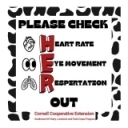
Unfortunately, euthanasia is a decision every farmer has to make. This article stresses the need for clear euthanasia protocols, proper staff training, and emotional support for farmers making these difficult decisions.
Frost Bite Mitigation and Management in Ruminants
Amy Barkley, Team Leader & Livestock Specialist
Southwest New York Dairy, Livestock and Field Crops Program

For those who are calving, lambing, and kidding this time of year, frost bite on the youngsters is a real concern. The good news is that while we can't control Mother Nature, we can manage around the worst weather to help reduce the risk of frostbite and assist animals that are affected.
Preparing your Lambing and Kidding Kits
Amy Barkley, Team Leader & Livestock Specialist
Southwest New York Dairy, Livestock and Field Crops Program

As the daylight hours fade and start to increase again over the next month, we're going to start seeing the first lambs and kids of the season born. Now's the time to check your lambing or kidding kit inventory to restock, replace out-of-date supplements and antibiotics, and mentally prepare for the upcoming season!
Ticks Don't Die Over Winter? Well, that "Ticks" me Off!
Amy Barkley, Team Leader & Livestock Specialist
Southwest New York Dairy, Livestock and Field Crops Program

Ticks dying during a harsh winter is a widely held belief, but observations and research indicate that they can survive extended periods of cold and snow. Instead, the winter conditions just slow the spread of populations to new areas and put a damper on the expansion of existing populations.
Manure-Handling Emergency Action Plans

Every farm, regardless of size, that handles animal waste must be prepared to manage a manure-handling emergency. While prevention is the best strategy to reduce the risk of this type of emergency, not all manure spills can be prevented; therefore, a written emergency action plan should be developed for every farm. This article highlights the components in an emergency action plan and their importance.
Garbage Feeding Livestock
Amy Barkley, Team Leader & Livestock Specialist
Southwest New York Dairy, Livestock and Field Crops Program
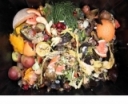
Garbage feeding is the term for the practice of feeding food scraps, food waste, or food industry byproducts to livestock. While feeding meat scraps is highly regulated, feeding vegetable, bakery, and other food industry waste is not.
Selling Turkeys This Year? Reminders for Labeling and Handling
Amy Barkley, Team Leader & Livestock Specialist
Southwest New York Dairy, Livestock and Field Crops Program

As you're planning your turkey harvest and sales, keep safe handling, proper labeling, and regulations on sale in mind to enjoy a stress-free and food safety-forward holiday season.
State Opens up $4.25M in Grant Funding for Beginning and Disadvantaged Farmers
Amy Barkley, Team Leader & Livestock Specialist
Southwest New York Dairy, Livestock and Field Crops Program

Two competitive state grants are available to fund start-up, improvement, or expansion of farm operations; support for marketing, training, construction, and more! Applications open October 25th and December 30th, closing January 24th, 2025 and December 30, 2024, respectively.
Moving Cattle Over State Lines or to Show? Official RFID Tagging is Required

Starting November 5, 2024, RFID "840" tags will be required for cattle that need official identification. There is no change to the cattle classes that require official ID, just a change to the tag requirements.
Selling Eggs? Here's What You Need to Know
Amy Barkley, Team Leader & Livestock Specialist
Southwest New York Dairy, Livestock and Field Crops Program

Selling eggs can bring in some extra farm income, alleviate the stress of a full egg fridge (admit it, we all have one in the spring and summer!), and help you feed your community. Small flock owners can sell eggs to individuals, at a farm market, or wholesale to NYS stores for retail sale. As eggs are produced and prepared for sale, there are some safety considerations and state regulations that need to be kept in mind.
Seven Percent (the rule of thumb for cattle weight gains based on BCS)

Have you heard of the "seven percent" rule of thumb for cattle weight gain? That means that an animal will need to either gain or lose 7% of their BCS (body condition score) 5 weight to enter the next BCS category. So, if you have a cow with an ideal BCS 5 score that weighs 1,200 pounds, that means that she'll need to gain 84 pounds to get to a BCS of 6 or lose 84 pounds to get to a BCS of 4.
Raising Pigs on Pasture: Lessons Learned from North Carolina
Amy Barkley, Team Leader & Livestock Specialist
Southwest New York Dairy, Livestock and Field Crops Program

At a recent talk by a pig producer with over 20 years' experience as part of the Carolina Meat Conference highlights major considerations for raising pigs on pasture.
Managing Flood Damaged Crops
With the recent flood damage, crops were unfortunately damaged. This article highlights how to manage crops that were damaged by floods.
Producing Low Sugar Hay - Some Considerations
Amy Barkley, Team Leader & Livestock Specialist
Southwest New York Dairy, Livestock and Field Crops Program

While there's an art and science to producing highly nutritional forage, similar principles influence how low sugar forages are produced. Species, harvest timing, and harvesting technique play a larger role than time of day.
Weekly USDA Farmer's Market Price Reporting is Starting to Come in!

This weekly price reporting information shows the range and average prices that farmers across the state receive for vegetables, fruit, meats, and dairy products using Square Point of Sale software. This article shares more about the project as well as opportunities to get involved and contribute to the price reporting.
Clostridial Disease Prevention by Vaccination in Lambs and Kids
Amy Barkley, Team Leader & Livestock Specialist
Southwest New York Dairy, Livestock and Field Crops Program

Tetanus is affecting quite a few lambs and kids this year. This article reviews how to prevent tetanus and overeating disease (pulpy kidney disease) through vaccination.
NYS Ag and Markets Shares USDA Recs to Minimize HPAI at Cattle Exhibitions

While no cases of Highly Pathogenic Avian Influenza have been reported in NYS cattle, the state is sharing federal recommendations for testing and interstate movement of cattle to fairs and shows this summer. Included in this article are links to remain abreast of the most current findings, testing requirements, and biosecurity recommendations for HPAI in cattle.
Coccidia in Chickens
Amy Barkley, Team Leader & Livestock Specialist
Southwest New York Dairy, Livestock and Field Crops Program

Coccidia are an intestinal parasite of layers and broilers that lead to production losses and death in young flocks. This article investigates the disease cycle, preventative measures, and treatment options available.
Wool Pickup Opportunity - April 21-22 2024
Amy Barkley, Team Leader & Livestock Specialist
Southwest New York Dairy, Livestock and Field Crops Program

Battenkill Fibers will be sending a truck to CNY/WNY on April 21 and 22. Pick up points are in the areas of Syracuse, Rochester, Canadaigua, and Watkins Glen. They are picking up wool for custom processing as well as purchasing some wool.
MeatSuite is a Free Online Database for Farmers to Advertise Bulk Meats
Amy Barkley, Team Leader & Livestock Specialist
Southwest New York Dairy, Livestock and Field Crops Program

This online database of farms received over 8,300 visits from NYS customers in 2023 and is anticipated to gain momentum into 2024. You can join for free at any time. If you're already a member, this is a friendly reminder to make updates to your page.
What Can I Expect from a Freezer Lamb? by Betsy Hodge
Amy Barkley, Team Leader & Livestock Specialist
Southwest New York Dairy, Livestock and Field Crops Program
If you're selling lamb as a whole animal, it's important that your consumers know how much meat will be available to take home and about what to anticipate in terms of cuts. This story follows an unshrunk, wool-on lamb butchered through a cooking and cutting workshop, and shares what to expect.
Northeast Goat and Sheep Dairy Development Grant is Now Accepting Applications!
Amy Barkley, Team Leader & Livestock Specialist
Southwest New York Dairy, Livestock and Field Crops Program

The Northeast Dairy Business Innovation Center is now accepting applications for their Goat and Sheep Dairy Development Grants, which can be used for both individual business projects and sector enhancement projects. The deadline to apply is June 6.
Brix: The Panacea to Grass-Based Finishing?
Amy Barkley, Team Leader & Livestock Specialist
Southwest New York Dairy, Livestock and Field Crops Program

There are theories that Brix concentration in forages can be used to determine the relative energy value of forages, and that increasing the Brix can put pounds on grass-finished animals faster. This article explores the relationship between plant sugars, pasture conditions, and finishing timelines for grass-based systems.
Livestock Checkoff Programs 101
Amy Barkley, Team Leader & Livestock Specialist
Southwest New York Dairy, Livestock and Field Crops Program

You may have heard of checkoff programs, but aren't sure exactly what they are, or what they mean to you as a livestock producer. This article sheds some light on the basics.
Tips and Tricks for Feeding Laying Hens
Amy Barkley, Team Leader & Livestock Specialist
Southwest New York Dairy, Livestock and Field Crops Program

Feeding laying hens doesn't have to be complicated! This article shares feeding recommendations for complete feeds both now and in the summer months as well as guidelines for supplementing with kitchen scraps and/or pasture.
Cornell Sheep Flock Protocols to Manage Listeriosis

Listeriosis is a bacterial infection of the body, which can result in neurological symptoms, abortion, depression, and sudden death. There is no preventative vaccine, and the only treatment is antibiotics and managing your fermented feeding protocols while working with your farm's veterinarian.
Cattle Injection Tips
Amy Barkley, Team Leader & Livestock Specialist
Southwest New York Dairy, Livestock and Field Crops Program

Giving injections of vitamins, vaccinations, dewormers, and antibiotics is a scientific process. Following label instructions, giving injections in the "injection triangle", and opting for sub-cutaneous (sub Q) injections reduces the risk of muscle lesions and trim loss.
How to Plan Your Breedings to Target Specific Holidays

This article shares the step-by-step planning process that goes into growing out kids and lambs for specific harvest dates. This can help you manage your herd or flock for spring holidays or can help you grow out animals that will be ready for pre-scheduled harvest slots at your local abattoir.
Feeding Cull Pumpkins to Livestock

Cull pumpkins, gourds, and squashes can provide a good source of nutrients for cattle. They have high moisture, but relatively high protein and TDN.
Confined Spaces: Hazards of Manure Gases

While new manure handling systems are more efficient and reduce manual labor, farmers and ranchers must understand the hazards associated with working in and around confined spaces where manure is stored. Keep yourself and employees safe this season by understanding the risk of manure gases!
2022 National Beef Quality Audit Results
Amy Barkley, Team Leader & Livestock Specialist
Southwest New York Dairy, Livestock and Field Crops Program
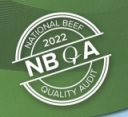
Every 5 years, this audit is used to identify trends in the beef market and in beef cattle in general. It also helps the industry gain an understanding of how the implementation of the Beef Quality Assurance Program has helped reduce losses and improve quality.
Please help us add contacts to our SWNY Farm Service Provider Directory!
Amy Barkley, Team Leader & Livestock Specialist
Southwest New York Dairy, Livestock and Field Crops Program

We want to know which categories and contacts would be most helpful to you! Please take 2 minutes to answer our anonymous survey at https://tinyurl.com/SWNYServiceProviders.
Poultry Carcass Breakdown Fact Sheet
Amy Barkley, Team Leader & Livestock Specialist
Southwest New York Dairy, Livestock and Field Crops Program

Breaking down a whole processed chicken into its individual parts can be a way to increase the revenue from your chicken and offer customers more choices. This fact sheet takes your step-by-step through the process of taking a whole chicken into whole wings, boneless skinless breast, thighs, and drums. For a PDF or print copy of this fact sheet, reach out to Amy Barkley at amb544@cornell or 716-640-0844.
Can Mutton Make Money?
Amy Barkley, Team Leader & Livestock Specialist
Southwest New York Dairy, Livestock and Field Crops Program

Histocially a low-value animal in the U.S., it may be time for mutton to make a comeback! There are processing and pricing considerations to aid in the development and sale of value-added products that can make these older ewes into valuable co-products.
Strategic Deworming of the Beef Herd: Continuing the Resistance Fight
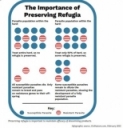
While commercial dewormers are available to assist beef producers with fighting gastrointestinal parasites, resistance is building among populations on many farms. Strategic deworming in addition to pasture rotation is helpful to keep worms susceptible to anthelmintics so that they remain effective.
Historical Review of the U.S. Beef Cattle Industry

When we look at the beef industry in the US today, it's hard to believe that cattle are non-native creatures. However, their introduction has resulted in a long history intertwined with the growth and industrialization of the country. This historical review shares major highlights of breed introductions and industrial shifts that have taken us to where we are today.
Is it Safe to Eat? Inspecting Poultry for Wholesomeness During Processing
Amy Barkley, Team Leader & Livestock Specialist
Southwest New York Dairy, Livestock and Field Crops Program

When processing poultry under the 1,000 bird exemption, it's important to make sure that the meat is safe to eat. There are some disease processes and conditions that render parts, organs, or even whole birds unconsumable. This article shares what is OK to leave and what should be removed.
Wildfire Smoke - What Can we do for our Livestock?
Amy Barkley, Team Leader & Livestock Specialist
Southwest New York Dairy, Livestock and Field Crops Program

Wildfire smoke from ongoing Canadian fires is drifting into NYS. As livestock caretakers, we can make small adjustments to our animal care, handling, and housing to reduce the effects of exposure to fine particulates and poor air quality.
The Importance of Hay Moisture
Amy Barkley, Team Leader & Livestock Specialist
Southwest New York Dairy, Livestock and Field Crops Program

Hay moisture is critical to storage success. Moisture that is too high results in bales that come with a fire risk in addition to decreasing feed quality as it moves from the field to the hay ring.
Regulations for Processing Poultry for Sale
Amy Barkley, Team Leader & Livestock Specialist
Southwest New York Dairy, Livestock and Field Crops Program

Processing regulations surrounding poultry for sale can be confusing. There's much to know regarding what birds you can process, where you can process them, and who you can sell them to. This article outlines the two available options for getting poultry processed in NYS.
Ask Extension: Can I Raise Pigs on Pasture? by Nancy Glazier
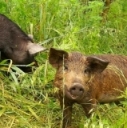
Pigs can successfully be raised on pasture with the right breeds, feed, and management. This article reviews the basics for getting started.
Goats 101 Webinar Archive
Amy Barkley, Team Leader & Livestock Specialist
Southwest New York Dairy, Livestock and Field Crops Program

Just getting started with goats and want to learn more about the basics? This archive of recorded webinars is for you!
RFID Tags - The What, Why, and How
Amy Barkley, Team Leader & Livestock Specialist
Southwest New York Dairy, Livestock and Field Crops Program

RFID tags are one of the USDA-approved official identification tags for cattle, deer, and swine. This article shares some information on what these tags are, how they work, and how you can order them for free for your herd.
How to get a Replacement FAMACHA Card
Amy Barkley, Team Leader & Livestock Specialist
Southwest New York Dairy, Livestock and Field Crops Program
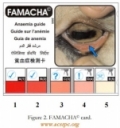
FAMACHA certified individuals can order replacement cards through Dr. Vatta's Parasitology Lab at Louisiana State University. You must have proof of certification to order a replacement card.
Benefits of Estrus Synchronization and Artificial Insemination
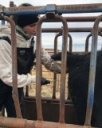
Synching cattle to be on the same estrus cycle can tighten calving windows, decrease labor spent on heat detection and breeding, and can result in increased profit potential.
Where Have all the Chicks Gone? by Amy Barkley
Amy Barkley, Team Leader & Livestock Specialist
Southwest New York Dairy, Livestock and Field Crops Program

Increased demand for chicks from farmers and small flock owners following rising egg prices and flock depopulations due to bird flu means that hatcheries are having a hard time keeping up. Some tips for farms still looking to get chicks in 2023 include getting orders in ASAP, looking into new (to you!) hatcheries, and considering ordering straight run rather than sexed chicks.
Commercial Sheep and Goat Producer Discussion Group Invites New Members
Amy Barkley, Team Leader & Livestock Specialist
Southwest New York Dairy, Livestock and Field Crops Program

This discussion group was formed to connect sheep and goat farmers, extension staff, researchers, and service providers to share experiences and information on sheep and goat management. Topics of discussion rotate through commercial production of all types including goat and sheep dairies, solar array grazers, traditional meat and fiber operations and grass-fed farms. This discussion group meets virtually via ZOOM at 7:30 pm on the third Thursday of every month. To receive notifications of upcoming meetings, please reach out to Amy Barkley to sign up! A list of past webinars and their recordings can be found here.
Follow Best Practices to Prevent the Spread of Bird Flu
Amy Barkley, Team Leader & Livestock Specialist
Southwest New York Dairy, Livestock and Field Crops Program

We are now one year into the avian influenza outbreak, and field season is just around the corner. With this comes a higher potential exposure to and spread of this virus from wild birds to domestic birds as well as between domestic flocks. It's not time to let our guard down, as we anticipate similar rates of infection to what we saw in 2022. Please take precautions when visiting fields with migratory birds and farmsteads.
Assessing (Beef) Calf Vigor, by Barry Whitworth, DVM

Following birth, beef calves should get up quickly and nurse colostrum within the first 4 hours. If calves have been through a hard calving, have poor vigor, and/or lack a strong suckling reflex, it's time for the producer to step in to help increase the calf's chances of success.
CCE Poultry Videos Archive
Amy Barkley, Team Leader & Livestock Specialist
Southwest New York Dairy, Livestock and Field Crops Program

Over the past two years, Cornell Cooperative Extension's team of poultry experts have put together a series of videos related to raising and managing poultry. The topics range from brooding and rearing to the marketing and sales regulations around meat and eggs. These videos are part of the CCE Flock Talk series.
CCE SWNY Team Seeks Participants for Pastured Broiler Cost of Production Study f
Amy Barkley, Team Leader & Livestock Specialist
Southwest New York Dairy, Livestock and Field Crops Program

The SWNY Dairy, Livestock, and Field Crops Program is currently seeking participant farmers in Allegany, Cattaraugus, Chautauqua, Erie, and Steuben counties to take part in a 2-year study that will evaluate the true costs of production in pastured broiler enterprises. Farmers will be compensated for their time on the project. Preference will be given to slow-growth broiler producers, but all producers will be welcomed and considered. If you're interested in learning more, reach out to Amy Barkley at amb544@cornell.edu or 716-640-0844.
Chick Brooding 101
Amy Barkley, Team Leader & Livestock Specialist
Southwest New York Dairy, Livestock and Field Crops Program

The weather may be cold and blustery, but it's getting to be that time where we turn our thoughts to brooding chicks for the upcoming season. Brooding chicks doesn't take much effort, but we need to make sure that we're providing the correct environment to avoid stunting or failure of the flock.
New York Equine Hay survey

CCE is looking for input from both sellers and buyers about hay produced in NYS. From the anonymous data, we will be able to determine buying and feeding practices; explore hay prices and the factors affecting them; characterize hay producer preferences and practices of marketing and selling; gain an understanding of the depth of forage test knowledge; and determine the educational needs for this topic going forward.
Raising the Orphan Calf, by Dr. Rosslyn Biggs

Calves abandoned by their dams have dim prospects if left on their own, but your intervention can help! Outlined in this article are tips to help you give these calves the care they need for their best start in life.
Winter Manure Spreading Restrictions

Winter manure spreading can be a tricky issue depending on where you farm. In the Northeast, some states ban winter manure spreading, while others allow it but have specific rules to follow. Regulations surrounding winter manure spreading vary greatly by state, so make sure you're up to date on what you're allowed to do in New York.
Tips for Avoiding Copper Toxicity in Sheep
Amy Barkley, Team Leader & Livestock Specialist
Southwest New York Dairy, Livestock and Field Crops Program

While a necessary nutrient, sheep have a very low tolerance threshold for copper. This article reviews some practical considerations for managing your sheep diets to avoid toxicity.
December 2022 Storm Damage Survey

CCE is working with officials to understand the extent of the December 2022 Blizzard. We are collecting information on damage to agricultural infrastructure, equipment, livestock, stored crops, and/or winter produce. You can either fill out the reporting survey, found at https://cornell.ca1.qualtrics.com/.../SV_9AytO5D9oYvRCXc or report the damage to one of our team's regional specialists. If you had damage from the November 2022 storm and haven't yet reported it, you can do that at this time.
Limit Feeding Beef Cattle, by Charlie Sasscer

If you have high quality forage, silage, corn, or other concentrates available to feed your cattle, this feeding strategy may be for you. It will help limit waste, overconsumption, and manure production while keeping or adding weight to cattle. The challenge is that you have to verify your feed's nutrient composition to ensure that you are meeting their dietary needs before employing this strategy.
A Real Life Reminder for Farm Safety Around Animals!
Katelyn Walley, Business Management Specialist and Team Leader
Southwest New York Dairy, Livestock and Field Crops Program
When working with any type of livestock or equipment, it's key to consider safety to keep yourself, your farm family, employees, and animals safe. On average from year to year, one in every four farm accidents involve animals. Below are some farm safety reminders for working with animals on the farm.
Keeping Your Flock in Production Through the "Off Months"
Amy Barkley, Team Leader & Livestock Specialist
Southwest New York Dairy, Livestock and Field Crops Program

Egg production naturally slows as we approach winter, but there are some proven strategies to keep your flock's production up! These include daylength, hen age, hen breed, and feed and water availability.
Cornell Meat Suite Relaunch - Is Your Profile Up to Date?

Cornell's MeatSuite.com has been upgraded with new features that make the program easier to use for both farmers and the public. Farmers are requested to update their profiles if they have one. If you're new to the program, you can create a free profile on www.meatsuite.com to share a little about your farm and to list the bulk order meats you have for sale.
Farm to School Program Looking for Farms to Supply Local Foods to Schools

CCE Harvest New York's Regional Farm-to-School Coordinator Program is looking for farms and food businesses to supply local foods to schools in our region, including meats and dairy products.
Fall 2022 Update on the Bird Flu
Amy Barkley, Team Leader & Livestock Specialist
Southwest New York Dairy, Livestock and Field Crops Program

Highly Pathogenic Avian Influenza (HPAI) is still a present threat to NYS commercial and backyard poultry producers as cases across the Northeast increase. New York has seen numerous wild bird positives across the state in the past month, with surrounding states having positive cases in commercial and backyard flocks.
Managing for Optimum Body Condition Scores, by Dr. Mark Johnson

Body condition scores indicate the fatness or skinniness of an animal and should be a 5.5 in beef cows (6 in heifers) for optimal breeding. Managing the weight of cattle after weaning will influence how well they breed back the following year.
Did the Breeding Take? Pregnancy Verification Options for Your Momma Cows
Amy Barkley, Team Leader & Livestock Specialist
Southwest New York Dairy, Livestock and Field Crops Program

Cows that are able to produce a calf a year are going to be the most efficient for your beef enterprise vs those that either don't take or require multiple breedings annually. Checking for open cows early will help you make culling decisions, and can be done via rectal palpation, ultrasound, or blood test.
The round bale conundrum

One of biggest advantages of large round bales is that they can be stored outside with minimal dry matter losses. One of the biggest disadvantages is that they can be stored outside and suffer significant dry matter losses. There lies the conundrum. Read on to learn ways to limit your losses when you don't have a barn to store round bales.
We are in Deer Worm Season: An update from Dr. tatiana Stanton

At this time of year, small ruminant producers need to watch out for deer worm infections, which increase sharply now compared to other seasons. In this article, Dr. tatiana Stanton reviews how to be prepared.
August 2022 Update on Highly Pathogenic Avian Influenza
Amy Barkley, Team Leader & Livestock Specialist
Southwest New York Dairy, Livestock and Field Crops Program

There has been no major update since the last outbreak in a backyard poultry flock on April 6th. However, there are cases still circulating in Western US, with some in the Midwest and along the East Coast. Wild birds in NYS and surrounding states are still testing positive for the virus.
Protecting Pastures from Drought by Fay Benson
Drought disrupts grazing operations more than confinement operations since confinement operations plan to have stored feed for their animals so when drought weather hits they have time to react and make alternative plans. It doesn't affect the livestock. As pasture soil dries, grass growth slows, graziers try to keep their rotation going hoping for rain. When it doesn't come they have to change to stored feed which can have a negative effect on livestock production.
My Feed Dust is Moving!? Grain Mites and How to Manage Them
Amy Barkley, Team Leader & Livestock Specialist
Southwest New York Dairy, Livestock and Field Crops Program

Grain mites are small arachnids that live in cereal grains. They have the potential to reduce nutrient densities of feed and can easily spread around the farm. Managing them when you first notice them can help limit damage.
Livestock Conservancy Microgrants Now Accepting Applications

This small-award grant program is open to those who steward livestock species which are considered endangered. Minigrant categories include National, Youth, Premier 1, and Breed Association.
The Delicate Art of Weaning Calves, by Dr. John Comerford, PSU Extension

Weaning calves is one of the more stressful experiences in a calf's life, but if done correctly and timely can provide a strong, independent animal with a higher market value.
Staying Safe Around Beef Cattle

Beef cattle are large animals that require you to be cautious while working with them, regardless of your history with the herd. Rich Taber of CCE Chenango shares his experience and tips for staying safe around them.
Resource for Farmers Selling Meat Breaks Down Yields and Cuts by Species

This resource, compiled by Betsy Hodge of CCE St. Lawrence, outlines the amount of meat that customers can expect from each of the major livestock species by both live and hanging weights. It also breaks down the approximate pounds of different cuts that a consumer can expect to get back from a half or whole animal.
Spotted Lanternfly has Been Found in SWNY- Report Them to Help Slow the Outbreak
Amy Barkley, Team Leader & Livestock Specialist
Southwest New York Dairy, Livestock and Field Crops Program

Spotted Lanternfly, an invasive pest that has a huge appetite for grape vines, fruit trees, maple trees, and other plants, has been sighted in SWNY. Help us delay the spread of this invasive pest by photographing them, killing any that you see, and reporting them to your local CCE office.
Managing Heat Stress in Cow-Calf Operations by Mark Johnson

When the weather gets warm suddenly and when there are long stretches of hot days, cattle will undergo heat stress. Management tactics such as working cattle in the early morning; providing ample, clean, cool water; providing shade; increasing airflow; and controlling flies are all important to help limit the effects of heat on cattle.
SUNY Cobleskill Announces Fall Meat Processing and Food Safety Class
Amy Barkley, Team Leader & Livestock Specialist
Southwest New York Dairy, Livestock and Field Crops Program

The Fall Meat Processing and Food Safety Certificate Program at SUNY Cobleskill is now accepting registrants. This intensive 4-week-long course will take participants through the processing of lamb, goat, hogs, and beef as well as provide HACCP training.
Dealing with Marek's Disease in Chickens
Amy Barkley, Team Leader & Livestock Specialist
Southwest New York Dairy, Livestock and Field Crops Program

Marek's Disease can be devastating in flocks and is one of the most common flock illnesses. However, with attention to flock health and vaccination of new arrivals, it can be easily managed.
Live Bans for Fowl Shows, Swaps, Meets, Auctions, and Sales Have Been Lifted
Amy Barkley, Team Leader & Livestock Specialist
Southwest New York Dairy, Livestock and Field Crops Program

Officials have made the decision to lift the bans on fowl shows, swaps, meets, auctions, and sales. White poultry shows and commerce are getting back to normal, we still need to take precautions to keep our birds safe from Avian Flu.
Managing Heat Stress by Paul Beck

Heat stress, especially when experienced before livestock are acclimated, can result in reduced performance, illness, and/or death. Small changes to management strategies can help animals overcome these challenges.
New York State Farm Directory launching in June 2022

From our friends at Cornell CALS
As part of Cornell Cooperative Extension's role in strengthening New York State agriculture, we are helping to spread word of the New York State Department of Agriculture and Markets' plans to launch a statewide online Farm Directory.
NYS Offers Heard Health Assistance to Cattle and Small Ruminant Producers
Amy Barkley, Team Leader & Livestock Specialist
Southwest New York Dairy, Livestock and Field Crops Program

The New York State Cattle Health Assurance Program (NYSCHAP) and the New York State Sheep/Goat Health Assurance Program (NYSSGHAP) were developed to aid producers with setting up whole herd/flock health management programs. The program is provided free of charge.
So, What Adds Value to a Beef Calf?
Amy Barkley, Team Leader & Livestock Specialist
Southwest New York Dairy, Livestock and Field Crops Program

Pre-conditioning through castration, vaccinations, weaning, and deworming can all add value to a calf, while providing a robust animal to buyers for their finishing stages of production.
Bottle Feeding Chart for Goat Kids

This chart from the university of Idaho outlines kid weight, the percentage of bodyweight that you're targeting to feed, and what the daily feeding amount should be. It's a handy reference to hang in the barn!
Johne's Disease in Cattle by Dr. Melanie Hemenway

This chronic, incurable bacterial infection is difficult to manage, fatal, and can be either fast or slow moving. Learning how to keep it out of the herd and/or control & manage for it to save substantial time and money.
Seeking Participants for Pastured Broiler Cost of Production Study
Amy Barkley, Team Leader & Livestock Specialist
Southwest New York Dairy, Livestock and Field Crops Program

The SWNY Dairy, Livestock, and Field Crops Program is currently seeking participant farmers in Allegany, Cattaraugus, Chautauqua, Erie, and Steuben counties to take part in a study that will evaluate the true costs of production in pastured broiler enterprises. Farmers will be compensated for their time on the project. If you're interested in learning more, reach out to Amy Barkley at amb544@cornell.edu or 716-640-0844.
2022 Goat Industry Update

This article written by Ken McMillin and Frank Pinkerton gives insight into goat production trends in the United States for this year and years previous. While broad in scope, it will help readers understand goat markets from a whole system prospective.
Cornell Cooperative Extension Launches Resource Website for Livestock Farmers
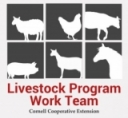
The CCE Livestock Program Work Team has just released an original website containing research-based resources for producing and marketing livestock, which includes an NYS slaughterhouse map. You can visit the website at https://www.ccelivestock.com.
Swine Owner Survey on Transboundary Animal Disease Prevention
Amy Barkley, Team Leader & Livestock Specialist
Southwest New York Dairy, Livestock and Field Crops Program
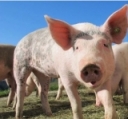
The University of Vermont is conducting a nationwide survey to help understand what drives swine herd biosecurity at the farm level. The survey will take about 15 minutes to complete. Access it here.
Grazing Small Ruminants to Avoid High Spring Parasite Loads
Amy Barkley, Team Leader & Livestock Specialist
Southwest New York Dairy, Livestock and Field Crops Program

It's time to get our animals out on pasture, but also a time to start stepping up our routine parasite testing and treatment. This article gives some tips to avoid highly contaminated areas and how to effectively deworm without adding to dewormer resistance.
Dung Beetles are our Partners in Pasture Management

Dung beetles are small invertebrates that help recycle manure and perform other essential duties related to pasture health. If populations are robust enough, they can even aid in the reduction of horn and face flies, though these populations are sensitive to feed-though insecticides.
Managing Pastures with High Fertilizer Prices and Drought, by Paul Beck

While the Northeast isn't in a drought, it hasn't escaped the high fertilizer prices. Paul Beck, with Oklahoma State Extension, shares the give-and-take that comes with making pasture and hayfield fertilization decisions.
NYS Adds Poultry Auctions, Sales, Meets, and Swaps to Live Fowl Ban

This expanded order by Commissioner Ball now includes all events that would bring poultry together from multiple locations. At this time, this does not include individual farms selling poultry, farm supply stores, chicks being shipped into the state from hatcheries, poultry processors that operate under a 5A or USDA Exemption, or live bird markets.
Managing Predation in Poultry Flocks
Amy Barkley, Team Leader & Livestock Specialist
Southwest New York Dairy, Livestock and Field Crops Program

It's the time of year where everything is waking up, including predators. Spring is when many of our trouble species are having young, increasing the feeding need. This article explores ways to keep your poultry safe.
USDA AMS Meat and Poultry Inspection Readiness Grant Now Accepting Applications

The Meat and Poultry Inspection Readiness Grant (MPIRG) program assists currently operational meat and poultry slaughter and processing facilities in obtaining a Federal Grant of Inspection under the Federal Meat Inspection Act (FMIA) or the Poultry Products Inspection Act (PPIA); or to operate as a State-inspected facility that is compliant with FMIA or PPIA under a respective Cooperative Interstate Shipment (CIS) program. Applications are due May 24, 2022.
USDA AMS Meat and Poultry Processing Expansion Program Grant OPEN

The Meat and Poultry Processing Expansion Program (MPPEP) provides grants to help eligible processors expand their capacity. Grants are capped at $25M or 20% of the total project costs. Applications are due by May 11, 2022.
USDA's Meat and Poultry Processing Capacity Technical Assistance Program (MPPTA)

USDA's Meat and Poultry Processing Capacity Technical Assistance Program (MPPTA) can help federal grant applicants complete their applications. There are many experts across multiple organizations that can assist.
Announcement of Fowl Show Ban in NYS - Will Re-Evaluate in Late May

With cases of Highly Pathogenic Avian Influenza increasing in NYS, Commissioner Ball has issued an order to ban all live fowl shows and exhibitions to help stop the spread. The situation will be re-revaluated at the end of May prior to the upcoming fair season.
2022 Cornell Sheep Shearer List Now Available

The 2022 Cornell list of sheep shearers is now available. While all shearers on this list work with sheep, many work with other species.
SUNY Cobleskill Announces Openings for 2022 Beef Processing Class

SUNY Cobleskill announces openings for a comprehensive multi-day workshop that will teach beef producers to maximize their marketing yield, and understand the regulations surrounding beef processing. This in-person course will be held from May 18 - 20, 2022.
SUNY Cobleskill Announces Openings for Meat Processing and Food Safety Class

SUNY Cobleskill is offering intensive, basic training certification in whole carcass utilization, equipment use, and sanitation within federal compliance. The course will be in-person, Monday through Friday from September 12th - October 7th, 2022.
Calculating Your Cost of Production - Start with Knowing Your Numbers!
Katelyn Walley, Business Management Specialist and Team Leader
Southwest New York Dairy, Livestock and Field Crops Program

Cost of Production is a financial analysis tool for farms of all shapes and sizes to use to improve their decision making capacity and operate their farm business profitably. Cost of production is calculated by adding the costs associated with a certain farm enterprise (or production area), and dividing that by the total units of production over a designated time frame (usually a year).
Nationwide Database Search Engine for Livestock Insecticides
Amy Barkley, Team Leader & Livestock Specialist
Southwest New York Dairy, Livestock and Field Crops Program

The Veterinary Entomology Pesticide Database can be used to search for which pesticides in which forms are approved for which species (both animal and pest!). This can be used as a resource to develop a list of potential products you can use on your livestock.
Cornell Resources about Reproduction in Small Ruminants

Reproduction in sheep and goats can seem overwhelming at times. If you have questions on the topic, this well populated database of resources can help get you the information you need!
Cornell Sheep and Goat Program Shares Video Series on Artificial Insemination in

This 11-video series walks through the process of how to artificially inseminate goats, including understanding the estrus cycle, heat synching, genetic evaluations, buck collection, and the process of AI.
Prevention of Highly Pathogenic Avian Influenza (HPAI) in Pastured Poultry
Amy Barkley, Team Leader & Livestock Specialist
Southwest New York Dairy, Livestock and Field Crops Program

Understanding the symptoms of HPAI and implementing biosecurity practices for farms that use outdoor systems can go a long way in protecting your investment.
Prevention of Highly Pathogenic Avian Influenza (HPAI) in Ratites
Amy Barkley, Team Leader & Livestock Specialist
Southwest New York Dairy, Livestock and Field Crops Program

Understanding the symptoms of HPAI and implementing biosecurity practices for ratite farms can go a long way in protecting your investment.
Study Reviewing Point-of-Sale (POS) Software and Marketing at Farmer's Markets

New POS systems present opportunities for farmer's market vendors to improve sales. Cornell researchers are collecting data using POS with NY farms selling meat, fruits, vegetables, fresh cut flowers and mushrooms in direct-to-consumer channels. The project seeks farms that sell their own products at farmers markets, farm stores, and staffed farm stands to participate.
When it the Right Time to Castrate Bulls by Jeff Robe

Castration of bulls destined for beef production is seen as a value-added practice that is most impactful and least stressful for the animal earlier in life and well before weaning. When looking into the value of castration, consider that heavier weight bull discounts at market can average $6 - $12/cwt ($30-$60/head).
Tips for Successful Frost Seeding
Amy Barkley, Team Leader & Livestock Specialist
Southwest New York Dairy, Livestock and Field Crops Program

Frost seeding is a low input and low disturbance method of improving pastures and hayfields. If potential pitfalls are addressed prior to seed getting on the ground, it can result in a more productive stand.
USDA Announces Grant to Expand Meat and Poultry Processing

This grant program provides funds to help eligible processors expand their capacity through building additional facilities, modernizing facilities/equipment, converting to USDA inspection, and other activities. Applications are due by April 11th.
HPAI Found in NYS on 2/19/22 - Suffolk County
Amy Barkley, Team Leader & Livestock Specialist
Southwest New York Dairy, Livestock and Field Crops Program

With Highly Pathogenic Avian Influenza now in New York State, it's important to review your biosecurity plans, remain vigilant, and be prepared to contact a veterinarian or state diagnostic lab if you suspect that you may have the virus.
A Little Preparation Makes a Successful Shearing Day
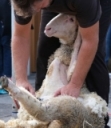
Shearing season can be stressful for shearers and shepherds alike, but it doesn't have to be! This article reviews what farms can do months, weeks, and days in advance of shearing to help make sure that shearing day goes smoothly.
Overview of the Cold Milk Lambar System used at Cornell University

A lambar system is one method of decreasing labor costs to artificially rear lambs and kids. This article reviews how to set up a low-cost system and prepare the lambs and kids for success.
Bull to Female Ratios - Preparing for Breeding Season, by Mark Johnson

Achieving a tighter calving window and earlier breeding results in older, heavier calves at weaning. We can achieve this in part by having a proper ratio of bulls to cows, which depends in part on bull age.
Hardware Disease of Cattle, by Dr. Bonnard Moseley

Cattle have a habit of accidentally consuming nails, wire, and other bits of metal in their day-to-day activities. Using a preventative such as a magnet can help reduce potentially expensive and/or fatal injury to the reticulum and heart from metal fragments.
Poultry Producers: Be on the Lookout for Highly Pathogenic Avian Influenza
Amy Barkley, Team Leader & Livestock Specialist
Southwest New York Dairy, Livestock and Field Crops Program
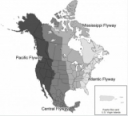
Nearly 140 cases of the highly pathogenic Avian Influenza strain have been identified in the U.S. in wild bird populations, but the virus can easily spread to domestic poultry. Keep your eye out for general respiratory disease symptoms and high death rates and be prepared to report any whole flock illness that looks suspicious.
The Pros and Cons of Seeding Pasture with Big Box Store Mixes
Amy Barkley, Team Leader & Livestock Specialist
Southwest New York Dairy, Livestock and Field Crops Program

This year, pasture seed will be in short supply. However, it's not a good idea to plant a mix that you happen across at your local big box or garden supply store. This article shares why.
Tube Feeding Neonatal Small Ruminants by Dr. Susan Kerr
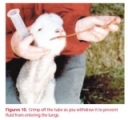
This guide provides information on the equipment and procedure to properly tube feed a small ruminant. The photo-forward format makes the steps easy to help ensure a successful experience.
Dealing with Frostbite on Newborn Lambs and Kids by Dr. tatiana Stanton

While frostbite is common in the Northeast, it's typically not life-threatening. However, it can be serious, affecting ears, feet, and tails of newborns as well as teats of does and ewes in milk. This article reviews prevention, symptoms, and management of frostbite.
Cold Temperature Management for Pigs

For pigs that are kept outside or in non-heated shelters, managing heat loss can be a struggle. Pigs that can't keep warm have an increased number of health problems, reduced growth rates, and decreased reproductive performance. Understanding how pigs tolerate and adapt to cold temperatures can help us alter our management schemes to best meet their needs.
Dealing with Lice on our Ruminant Species
Amy Barkley, Team Leader & Livestock Specialist
Southwest New York Dairy, Livestock and Field Crops Program

Lice can be a burdensome parasite, where affected animals can experience discomfort to the point of losing production. Learn about the thresholds and strategy for treatment in this article!
ASI's 2022 Developing Shearer and Mentor Grant Application Now Available
Amy Barkley, Team Leader & Livestock Specialist
Southwest New York Dairy, Livestock and Field Crops Program

Beginning in 2022, ASI will grant a total of $15,000 with the goal of helping develop beginner and intermediate shearers and keeping them in the industry. Applications are due by January 15th. Learn more about the Shearer and Mentor Grant here:
Cache Valley Fever - Understanding the Prevalence in the Northeast
Amy Barkley, Team Leader & Livestock Specialist
Southwest New York Dairy, Livestock and Field Crops Program

Cache Valley Fever is a mosquito-transmitted virus that causes infertility, abortions, stillbirths, and severe congenital abnormalities in sheep and goats. If you suspect that you have the Cache Valley Virus on your farm, please reach out to Amy Barkley to receive a questionnaire from Dr. Mary Smith to help understand the virus's prevalence in the Northeast.
CCE Resource List for Lambing and Kidding
Amy Barkley, Team Leader & Livestock Specialist
Southwest New York Dairy, Livestock and Field Crops Program

Over the years, CCE has developed a series of picture-based and text-based resource guides for farms entering lambing and kidding season. These have been compiled from our Cornell websites, putting them all in one place and making them easier to find.
Calling all Silvopasture Producers! Help us Develop our Northeast Inventory
Amy Barkley, Team Leader & Livestock Specialist
Southwest New York Dairy, Livestock and Field Crops Program

Do you practice silvopasturing? If so, you can help silvopasture experts develop their Northeast inventory of farms managing this way. Current and past producers are welcome to contribute!
Spotted Lanternfly is in NYS - Please stay on the lookout for this pest!
Amy Barkley, Team Leader & Livestock Specialist
Southwest New York Dairy, Livestock and Field Crops Program
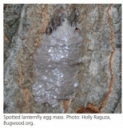
The Spotted Lanternfly is in NYS, and tends to destroy vineyards, hopyards, orchards, and forests. If you see this insect or it's egg masses in winter (which look like smears of concrete), please contact NYS Ag and Markets or your local extension agent.
Vaccine Handling and Storage, by Bob LeValley
Amy Barkley, Team Leader & Livestock Specialist
Southwest New York Dairy, Livestock and Field Crops Program

Proper handling and storage of vaccines both while that vaccine is in storage and is vital to their effectiveness. Without proper measures in place, the quality may diminish rapidly and/or the active ingredients may deactivate.
USDA Offers Funding to Reimburse Farms Transitioning to Organic Production
Amy Barkley, Team Leader & Livestock Specialist
Southwest New York Dairy, Livestock and Field Crops Program

The U.S. Department of Agriculture (USDA) is providing up to $20 million to reimburse agricultural producers and handlers who are certified organic and crop and livestock producers who are transitioning to organic for eligible expenses incurred during fiscal years 2020, 2021, and/or 2022.
Screening for Diseases when Buying Goats and Sheep
Amy Barkley, Team Leader & Livestock Specialist
Southwest New York Dairy, Livestock and Field Crops Program

When bringing new animals into the herd of flock, there is always a potential to introduce diseases. Dr. tatiana Stanton describes common diseases to look out for, and details how to care for any new arrivals to the farm.
Solar Leases and Farms
Amy Barkley, Team Leader & Livestock Specialist
Southwest New York Dairy, Livestock and Field Crops Program

New York is experiencing a boom in solar development, and many of those developments intersect with farmers and their land. In this article, Caroline Hunt of Yates County shares the takeaways of the recent workshop, "Navigating Solar Lease Agreements and the Solar Development Process: A Program for NY Farmers and Rural Landowners". In it are important points to consider when leasing your farmland for solar.
Tips on Grazing After a Frost or Freeze
Amy Barkley, Team Leader & Livestock Specialist
Southwest New York Dairy, Livestock and Field Crops Program

Some cold-damaged forages are fine to feed, but others have potential bloat and toxicity concerns. Sorghum, sudangrass, sorghum-sudan hybrids, Johnsongrass, and alfalfa are all species need a little extra management to graze safely.
Cold Stress and Beef Cattle by David Hartman, PSU
Amy Barkley, Team Leader & Livestock Specialist
Southwest New York Dairy, Livestock and Field Crops Program

While heat stress gets a whole lot of attention, cold stress can be just as challenging to manage. Cattle are amazingly tolerant of low temperatures should they be provided adequate shelter and feed with good management.
CCE NYS Pastured Broiler Survey
Amy Barkley, Team Leader & Livestock Specialist
Southwest New York Dairy, Livestock and Field Crops Program

Help us understand budgeting and costs of production of pastured broiler enterprises across NYS! Current and prospective producers are both invited to participate. https://cornell.ca1.qualtrics.com/jfe/form/SV_2atyNUBmyRFOkom
Upcoming Online Courses through CCE - Getting Started with Livestock and Grazing
Amy Barkley, Team Leader & Livestock Specialist
Southwest New York Dairy, Livestock and Field Crops Program
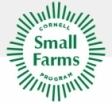
Whether
you're considering starting a poultry, swine, cattle, or sheep enterprise, or
are looking to get started with or improve grazing strategies for your farm,
the Cornell Small Farms Program's online courses can provide the information
and support you need to take the next step. Registration is now open for classes starting in November!
Grant Seekers: SAM & DUNS: Register Your Business Now!
Amy Barkley, Team Leader & Livestock Specialist
Southwest New York Dairy, Livestock and Field Crops Program

SAM & DUNS registrations are free and needed to apply for federal grant opportunities. While it takes minutes to apply, it may take weeks to receive your number. Registering your farm or business now means that you'll be prepared for grant opportunities that may come your way.
Northeast SARE is now accepting applications for its 2022 Farmer Grant Proposals
Camila Lage, Dairy Management Specialist
Southwest New York Dairy, Livestock and Field Crops Program
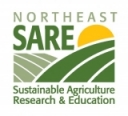
Proposals are due by 5 p.m. ET on Tuesday, November 16, 2021.
Know if this program is for you here:
Is Your Farm Ready to Prevent a Foreign Animal Disease?
Amy Barkley, Team Leader & Livestock Specialist
Southwest New York Dairy, Livestock and Field Crops Program

Foreign animal diseases can be devastating for farmers because there are usually no vaccines available, and animals' immune systems are na´ve. African Swine Fever (ASF), a highly pathogenic and deadly disease, has recently been reported in the Dominican Republic. This timely article shares what can happen during a disease outbreak and steps you can take to keep your herds and flocks safe.
Raising Prices on Meat, a Pep Talk
Amy Barkley, Team Leader & Livestock Specialist
Southwest New York Dairy, Livestock and Field Crops Program

A team of Cornell researchers conducted a price comparison study across meats sold from small farms and grocery stores. The results of their findings are included in this article, which also addresses how farmers can challenge their assumptions when considering raising prices for their locally produced meats.
Foot Rot in Small Ruminants
Amy Barkley, Team Leader & Livestock Specialist
Southwest New York Dairy, Livestock and Field Crops Program

While foot rot is sometimes considered a disease of cattle, it too affects sheep and goats in NYS, though goats show fewer classic symptoms than sheep. This article by Dr. tatiana Stanton of Cornell University details how to identify and eliminate foot rots from herds and flocks.
Cornell Cooperative Extension Farmer School Tax Series
Katelyn Walley, Business Management Specialist and Team Leader
Southwest New York Dairy, Livestock and Field Crops Program
Cornell Cooperative Extension's Farmer Tax School: An educational series from Cornell Cooperative Extension Farm Business Management Specialists offering courses designed to inform and empower farm managers to better understand their tax obligations, management strategies, and improve farm profitability. This consists of four courses offered October 2021 - January 2022. For more information, visit tinyurl.com/ccetaxschool.
How you Administer Injections Matters
Amy Barkley, Team Leader & Livestock Specialist
Southwest New York Dairy, Livestock and Field Crops Program
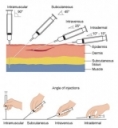
Injections are a necessary part of livestock management. Not only is each formulated for a different part of the body, but they're also formulated to be injected into a specific layer of tissue (skin vs muscle vs vein). This article and graphic illustrate the proper angles for injection administration.
USDA Ready to Help NY Farmers Recover from Recent Storms
Amy Barkley, Team Leader & Livestock Specialist
Southwest New York Dairy, Livestock and Field Crops Program

SYRACUSE, New York, July 16, 2021 — Recent extreme weather conditions have impacted farmers and ranchers in New York. The U.S. Department of Agriculture (USDA), through the Farm Service Agency (FSA), has disaster assistance programs available to help agricultural producers recover after natural disasters, including floods.
Opportunity for Graziers to Fine Tune their Grazing Skills
Amy Barkley, Team Leader & Livestock Specialist
Southwest New York Dairy, Livestock and Field Crops Program

Graziers who participate in this project will fine tune their grazing skills to help improve pasture output by learning how weather conditions (rainfall, temperature) interact with management decisions (residue height, rest) to affect regrowth in their pastures.
Free Fecal Egg Count Testing to Improve Parasite Resistant Genetics
Amy Barkley, Team Leader & Livestock Specialist
Southwest New York Dairy, Livestock and Field Crops Program

Looking to improve your small ruminant genetics to be more parasite resistant? Free fecal egg testing is available to producers in the Northeast through the University of Rhode Island. Read this article for more information.
Management Practices to Add Value to Beef Calves
Amy Barkley, Team Leader & Livestock Specialist
Southwest New York Dairy, Livestock and Field Crops Program

Pre-conditioning calves may take additional effort, but integrating relatively simple practices into a management program can result in higher prices at market and a leg up if those animals are remaining on the farm to be finished. Learn more in this article from Mark Johnson and Paul Beck from Oklahoma State University.
USDA Announces Grant to Assist Small Meat Processors Attain Federal Inspection
Amy Barkley, Team Leader & Livestock Specialist
Southwest New York Dairy, Livestock and Field Crops Program

Small and mid-sized red meat and poultry processors looking to move from 5-A or custom exempt to USDA (federal inspection) status are encouraged to apply for this competitive grant. Applications are due by August 2nd, 2021.
Cause, Prevention, and Treatment of Foot Rot in Cattle
Amy Barkley, Team Leader & Livestock Specialist
Southwest New York Dairy, Livestock and Field Crops Program

The solidity of cattle's feet is essential for proper health, gains, and performance, thereby reducing the potential for economic loss and added veterinary bills. Foot rot is an infectious disease that is treatable if caught early enough and properly managed, with most animals making a full recovery. This article by Oklahoma State University shares clinical signs, prevention, and treatment options.
Raising Holstein and Crossbred Steers
Amy Barkley, Team Leader & Livestock Specialist
Southwest New York Dairy, Livestock and Field Crops Program

Beef steers, whether purebred Holstein or Holstein crossed with beef genetics, are a co-product of milk production. Although both raised for beef, these animals grow differently and finish differently than pure beef breed steers. Because of this, it's important to understand how these animals grow and how genetics impact their final carcass yield and quality.
New Report Summarizes NYS Meat Processor Needs and Perspectives
Amy Barkley, Team Leader & Livestock Specialist
Southwest New York Dairy, Livestock and Field Crops Program

In Fall 2020, CCE interviewed all NYS meat processing facilities to gain an understanding of businesses' interest in expanding or upgrading to a higher level of inspection, barriers to sustainability and growth, and what types of support they needed. Read the full report here.
Short on hay this spring? by Joe Lawrence and Kitty O'Neil

Managing forage inventories can be a difficult task, especially in years when weather challenges cut into harvest yields. Learn more about some management options when forages are short in the spring.
Spring Weed Control in Grass Hay and Pastures by Dwight Lingenfelter - PSU
Joshua Putman, Field Crops and Forage Specialist
Southwest New York Dairy, Livestock and Field Crops Program

Over the past few weeks, we have received calls in the SWNY region pertaining to weed control options in grass hay and pastures. Spring weed control timing is critical and there are several options to consider. Remember, once weeds are in the "seed setting" stage, a herbicide application is no longer effective. Full article can be found here.
Feeding Small Grains to Beef Cattle, Penn State Extension
Amy Barkley, Team Leader & Livestock Specialist
Southwest New York Dairy, Livestock and Field Crops Program

Small grains can be alternatives to corn in beef rations. These grain sources can be added into crop rotations and distribute cropping and pricing risks, bearing in mind an equivalent or advantageous exchange price without sacrificing feed value.
Recruitment of Shepherds, Beekeepers, and Solar Sites for Industrial Solar Study
Amy Barkley, Team Leader & Livestock Specialist
Southwest New York Dairy, Livestock and Field Crops Program

The American Solar Grazing Association (ASGA) announced on May 4th that it will collect and analyze data on the agricultural, economic, and environmental impacts of co-locating agricultural enterprises such as commercial beekeeping and sheep grazing on photovoltaic sites.
Grazing Livestock and Mud Season
Amy Barkley, Team Leader & Livestock Specialist
Southwest New York Dairy, Livestock and Field Crops Program

The early part of the grazing season can be challenging to manage when wet pastures are part of the equation. Amy Barkley discusses management tactics to preserve pasture quality while getting the most out of the early grazing season.
Benefits of Estrus Synchronization and Artificial Insemination, by Mark Johnson
Amy Barkley, Team Leader & Livestock Specialist
Southwest New York Dairy, Livestock and Field Crops Program

Tightening the window of your beef cattle breeding season to 60-75 days can result in an earlier, heavier, more uniform calf crop. Additionally, management can be easier when all cattle are at the same stage of reproduction.
Checking Insect Traps in the Snow - What we have so far?
Joshua Putman, Field Crops and Forage Specialist
Southwest New York Dairy, Livestock and Field Crops Program

As of this week, we have our first moth captures in SWNY. Two black cutworm moths were captured in Steuben County and no moths were collected from Cattaraugus County. As temperatures increase and the spring progresses, be on the lookout for these yield robbing pests.
Small Flock Turkey Production, by Penn State Poultry Extension
Amy Barkley, Team Leader & Livestock Specialist
Southwest New York Dairy, Livestock and Field Crops Program

Looking to add a small-scale turkey flock to your farming enterprise? This article provides information and a series of excellent resources to get you started.
Keeping the First Calf Heifers on Track by Parker Henley, OK State
Amy Barkley, Team Leader & Livestock Specialist
Southwest New York Dairy, Livestock and Field Crops Program

Heifer development is costly, but necessary for cow-calf operations. Recommendations for breeding based on maturity of first calf heifers are discussed in this article.
Selection for Calving Ease
Amy Barkley, Team Leader & Livestock Specialist
Southwest New York Dairy, Livestock and Field Crops Program

One way to manage dystocias in a beef herd is to use genetic prediction to select for bulls that have good scores around calving ease. In this article, Mark Z. Johnson, Oklahoma State University Extension Beef Cattle Breeding Specialist, discusses how to interpret EPDs for success in the next calving season.
Webinar Recordings for Beef Producers Now Available
Amy Barkley, Team Leader & Livestock Specialist
Southwest New York Dairy, Livestock and Field Crops Program

Cornell's Livestock Program Work Team has completed it's three-webinar series on the three major beef operations: "Insights to the Cow/Calf Enterprise", "Introduction to Stocker Cattle", and "Beef Finishing Programs". If you missed any of these three webinars, you can watch them for free. You can find more details in this article.
Dry Manure Spreader Calibration
Amy Barkley, Team Leader & Livestock Specialist
Southwest New York Dairy, Livestock and Field Crops Program

Manure is an excellent nutrient resources for crops and pastures, and the proper calibration of a spreader will help to ensure an even distribution of nutrients consistent with cropping recommendations and your nutrient management plan. This article explores two methods of calibrating a dry manure spreader.
Opportunity: Cornell By-the-Cut Meat Pricing and Sales Research Project
Amy Barkley, Team Leader & Livestock Specialist
Southwest New York Dairy, Livestock and Field Crops Program
Cornell University is researching direct-to-consumer sales of locally-raised meat products sold by-the-cut to help meat producers improve profitability. The project team is looking for farm participants. Participation includes collecting sales data with Point-of-Sale (POS) online sales software, like Square, and using Cornell's new online Meat Price Calculator.
The Pigweed Roadshow is on!
Joshua Putman, Field Crops and Forage Specialist
Southwest New York Dairy, Livestock and Field Crops Program
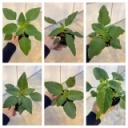
Interested in learning about problematic weeds in the state? We are looking for locations willing to host us as we will be joined by Dr. Lynn Sosnoskie and her weeds, to learn about different identification characteristics among the pigweed species here in NY. Can you correctly identify all 6 weeds in this photo?
Beware the Straight Run Chicks
Amy Barkley, Team Leader & Livestock Specialist
Southwest New York Dairy, Livestock and Field Crops Program

Chicks are hot again this year, and heritage breed pullet chicks can be hard to come by. In this article, Amy Barkley and Jason Detzel (Livestock Educator, CCE Ulster County) discuss recent observations of the chick market and share some things that should be considered before purchasing straight run chicks.
Thinking of Using CCE's MeatSuite to Sell Bulk Meats? Here's How to Get Started
Amy Barkley, Team Leader & Livestock Specialist
Southwest New York Dairy, Livestock and Field Crops Program

Meatsuite.com is a Cornell-managed online platform which connects local farms selling bulk meats to potential customers. This article shares some information on how to get started using the program.
Weed Control in Wheat and Nitrogen Carrier Issues
Joshua Putman, Field Crops and Forage Specialist
Southwest New York Dairy, Livestock and Field Crops Program

Populations of winter annual weeds will become more prevalent in late March/early April and can compete with wheat and barley and slow the rate of crop development potentially reducing yield. If winter annual weeds like common chickweed, henbit, purple deadnettle, marestail/horseweed, and others emerge with the small grain and are left unchecked, the potential impact on yield could be great.
Certain herbicides can be applied in different nitrogen fertilizer carriers, but timing is critical. Article written by Dwight Lingenfelter with Penn State University.
Spring Pasture Management: Where Do I Start?
Amy Barkley, Team Leader & Livestock Specialist
Southwest New York Dairy, Livestock and Field Crops Program

It's time to get out in the pastures to check the status of soil fertility and winter damage in addition to developing a grazing management plan for the coming grazing season. Penn State Extension educators, Justin Brackenrich and Leanna Duppstadt, share how to evaluate these items and share considerations for preparing pastures for the year ahead.
Nitrogen Applications Being Made to Winter Cereals - How much should you apply?
Joshua Putman, Field Crops and Forage Specialist
Southwest New York Dairy, Livestock and Field Crops Program

Winter cereals like wheat, should have some nitrogen (N), most of the phosphorus (P), and possibly some potassium (K) in the fertilizer band at planting; soil test results should be analyzed before making a decision about P and K application amounts. With recent cool temperatures, spring nitrogen applications are being made across Western NY as growers are able to get across the fields efficiently. When attempting to achieve near-maximum yields of wheat and when diseases can be controlled, the nitrogen rates can be increased to 80 to 90 pounds per acre. The full article on fertilizer rates for winter cereal crops can be found here.
New Self-Paced On-Farm Poultry Processing Course Available
Amy Barkley, Team Leader & Livestock Specialist
Southwest New York Dairy, Livestock and Field Crops Program

This Cornell Small Farms course offers detailed videos and lessons on food safety, processing and humane techniques for dispatching birds. Successfully completing this course will earn a Certificate of Completion. This certificate may be an acceptable option for farm insurance providers that request a training before underwriting a policy for your poultry processing operation.
The Handy Bt-Trait Table for U.S. Corn Production
Joshua Putman, Field Crops and Forage Specialist
Southwest New York Dairy, Livestock and Field Crops Program
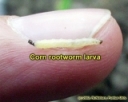
2021 marks the 25th year of commercialization of Bt corn in the United States. The first Bt corn hybrids helped producers control European corn borer, but Bt has come a long way since then. Bt hybrids are now planted on greater than 80% of U.S. corn acres. The benefits of widespread use of Bt hybrids include a reduction in corn borer in the landscape (benefitting conventional corn & vegetables too), and an overall reduction in insecticide use. Producers in SWNY are reviewing seed catalogs to purchase the best corn hybrids for their operation. Some acres in the region are continuous corn and would warrant the need for protection against certain pests such as corn rootworm. This PDF document provides information about the trade names, primary insect targets, and herbicide tolerances for each product. If you have questions about corn traits or placement, contact Josh Putman at 716-490-5572 or jap473@cornell.edu.
Replace Missing PTO Shields at Discount Prices
Amy Barkley, Team Leader & Livestock Specialist
Southwest New York Dairy, Livestock and Field Crops Program

PTO shields are not often thought about, and when they are, it's usually in a negative light. However, they are an important part of a farm's safety plan. PTOs are dangerous and can result in catastrophic injury. Installing a shield is an added barrier of protection between man and machine. A program offered through the New York Center for Agriculture Medicine and Health (NYCAMH) can provide replacement PTO shields at substantially reduced cost. These parts cost between $59 - $83 through the program and can be ordered at https://www.nycamh.org/program...
Liberty-resistant Palmer amaranth confirmed in Arkansas
Joshua Putman, Field Crops and Forage Specialist
Southwest New York Dairy, Livestock and Field Crops Program

Researchers from the University of Arkansas have identified Palmer amaranth populations that survived several applications of Liberty (glufosinate) Herbicide. Seed was collected and tested in the greenhouse showing a resistance of 16 times the typical field use rate. These findings represent the first documented case of a broadleaf resistance to Liberty Herbicide in the world. Liberty link traits are an additional tool to help corn and soybean producers control problematic weeds like Palmer amaranth, waterhemp, and marestail. Palmer amaranth is now present in 3 counties in New York State, one of which is in Southwest NY. Seed was collected from these populations in the fall of 2020 and are being tested for resistance to our commonly used herbicides. Stay tuned as we conduct research on these NY populations. Full article from the University of Arkansas can be found here.
Care of Pigs from Farrowing to Weaning, by John Rea
Amy Barkley, Team Leader & Livestock Specialist
Southwest New York Dairy, Livestock and Field Crops Program

On average, two piglets from every litter are lost during the period from birth to weaning, which has been repeatedly linked to poor management. Fortunately, management can continuously improve to help reduce production losses. This article by John Rea of the University of Missouri delves into the specifics of this most critical period in the life of a pig, starting with preparations for farrowing and ending at weaning.
Dystocia in Small Ruminants
Amy Barkley, Team Leader & Livestock Specialist
Southwest New York Dairy, Livestock and Field Crops Program
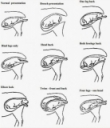
It's lambing and kidding time for those early season babies. In an ideal world, does and ewes are able to produce a lamb or kid within about 45-60 minutes of beginning active labor without much difficulty. However, it is common for up to 5% have some sort of trouble. Dystocia can be caused by malpresentation of the fetus, which, depending on the severity, can be addressed by a flock or herd caretaker. This article shares some of the common dystocias in small ruminants, their causes, and how to approach aiding a doe or ewe.
Planting dicamba-tolerant soybeans in 2021? Options and changes to the labels
Joshua Putman, Field Crops and Forage Specialist
Southwest New York Dairy, Livestock and Field Crops Program

-Written by Mike Hunter, Field Crop Specialist with the North Country Regional Ag Team-
Are you planting dicamba-tolerant (Xtend or XtendFlex Technology) soybeans in 2021? If so, one of the tools in the weed control toolbox will be the option to use one of the three registered dicamba herbicides for use on Xtend or XtendFlex soybeans. In October 2020, the EPA approved a five year registration of XtendiMax and Engenia herbicides. It also extended the registration of Tavium herbicide. Xtendimax, Engenia and Tavium are currently the only dicamba products registered for over-the-top use in dicamba-tolerant soybeans in New York State. There are several updates and changes to the New York labels that can be found on the Cornell Field Crops Blogs. If you have questions about soybean production in 2021, contact Josh Putman at 716-490-5572 or jap473@cornell.edu
Do you have Alfalfa Snout Beetle on your farm?
Joshua Putman, Field Crops and Forage Specialist
Southwest New York Dairy, Livestock and Field Crops Program

-Article written by Dr. Elson Shields, Department of Entomology, Cornell University-
Alfalfa Snout Beetle is a significant problem in Northern NY. When alfalfa snout beetle (ASB) becomes fully established on your farm, its presence cost you $300-$600 per cow annually. The higher producing dairies are hit harder than the lower producing dairies because the higher producing dairies are more reliant on their production of high quality alfalfa and grass forage to maintain their high milk production. This is an unbelievable amount of loss caused by ASB and is ignored by many in the northern New York Agribusiness community. ASB damage is frequently missed and stand loss is often blamed on winter kill. It has not been confirmed in SWNY, but if you feel your alfalfa stands are diminishing quickly, it might be time to look deeper. The full article can be found on Field Crop News.
Lambing Time Management by Dr. Scott Greiner
Amy Barkley, Team Leader & Livestock Specialist
Southwest New York Dairy, Livestock and Field Crops Program

Farms across the Northeast are beginning to get into the thick of the first main lambing season of the year. This article, by Dr. Scott Greiner of Virginia Tech, shares some management reminders to help ewes and lambs get off to their best start. These tips include making frequent visits to the lambing barn, moving ewes to a jug after lambing, and ensuring lambs are receiving adequate colostrum.
Ag Value Assessment Reminder
Katelyn Walley, Business Management Specialist and Team Leader
Southwest New York Dairy, Livestock and Field Crops Program
The agricultural value assessment is a program offered to eligible farms that can reduce the property taxes on land that is used for farming. The program has to be applied for annually by March 1st.
Grain Handling and Storage Safety
Joshua Putman, Field Crops and Forage Specialist
Southwest New York Dairy, Livestock and Field Crops Program
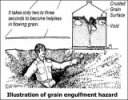
Grain facilities are locations that receive, handle, store, process, and ship bulk agricultural commodities like corn, soybeans, wheat, and oats. In New York, these facilities can be quite large and can handle large quantities of grain products. Additionally, many agricultural producers have their own grain facilities for on-farm storage. The grain handling industry is hazardous because workers can be exposed to serious and life-threatening dangers. Suffocation is the number one cause of death in grain storage bins. There are things that can be done to reduce these hazards. Information and resources can be found on the United States Department of Labor Occupational Safety and Health Administration (OSHA) website.
Sheep 2023 Needs Assessment Survey Available to Producers
Amy Barkley, Team Leader & Livestock Specialist
Southwest New York Dairy, Livestock and Field Crops Program

The USDA's National Animal Health Monitoring System (NAHMS) conducts national studies of various livestock sectors. In preparation for the upcoming national sheep study in 2023, we are looking for your input on the most important health issues facing the U.S. sheep industry. Your responses will be used to determine which issue areas should be the focus of the study and be used to identify and prioritize the objectives of the study. The survey will take 10-15 minutes to complete and can be found at this link: https://aphisvs.gov1.qualtrics...
Blood Sampling in Sheep
Amy Barkley, Team Leader & Livestock Specialist
Southwest New York Dairy, Livestock and Field Crops Program
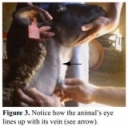
Blood draws on goats and sheep are common. While most of us leave drawing blood to the herd or flock veterinarian, there are some instances where it can make sense for farmers to draw blood themselves. Blood can be used to test for pregnancy, genetic markers, or diseases. This article by Purdue University Extension shares step-by-step instructions for gathering equipment, safe restraint, and different methods for preparing the site, drawing blood, and considerations for handling and storing the samples.
Livestock Report - Jan. 22, 2021
Amy Barkley, Team Leader & Livestock Specialist
Southwest New York Dairy, Livestock and Field Crops Program
There have been some shifts in the beef market as of late, and some changes for the year 2021, including increased costs of grain. With corn prices approaching $5.50/bushel, there may be an advantage to running stockers this year. Generally, the trends in the market have been as follows: cull cows have maintained the same price year over year, finished prices have declined, feeders were up $5/cwt in 2020 vs 2019, and bull calf values are up. The details can be found in the full report by Dr. Mike Baker.
Safety for Supplementing Heat to Livestock
Amy Barkley, Team Leader & Livestock Specialist
Southwest New York Dairy, Livestock and Field Crops Program

When it becomes necessary to provide supplemental heat to livestock, management of the barn and heat sources is important to ensure building and livestock safety. The selection of an appropriate heat source in addition to how that source is managed can help prevent animal injury and potentially devastating barn fires. This information, as well as emergency preparedness tips, can be found in this article.
Cornell University Announces New Grazing Website
Amy Barkley, Team Leader & Livestock Specialist
Southwest New York Dairy, Livestock and Field Crops Program

Cornell University has created a website to be used as a reference for livestock grazing. Key pages include current research, recorded webinars, publications, references, and tools for producers to help improve the production of their pastures and grazing stock. Most of the information currently available is focused on solar grazing, but more information and tools are being regularly added as the website continues to be developed. Visit the page at https://blogs.cornell.edu/grazing/.
Meet our New Faculty Member: Dr. Louis Longchamps
Joshua Putman, Field Crops and Forage Specialist
Southwest New York Dairy, Livestock and Field Crops Program

Dr. Longchamps is an assistant professor in the Soil and Crop Science section of the School of Integrative Plant Science. His academic focus is on precision agriculture, digital agronomy, on-farm experimentation, and soil and crop improvement. He has a Ph.D. in weed science where he focused on weed distribution in corn fields in order to assess the best approach for weed spot spraying technologies. His postdoctoral studies worked to improve nutrient, water, and seed use efficiency by soil mapping and remote sensing. Dr. Longchamps experience will pair nicely with current and new faculty at Cornell University.
Herbicide Resistance Update on Marestail
Joshua Putman, Field Crops and Forage Specialist
Southwest New York Dairy, Livestock and Field Crops Program

Horticulture Weed Scientist, Dr. Lynn Sosnoskie, has been conducting some interesting research over the past few months. Extension specialists from all around the state collected and submitted weed specimens last fall for herbicide-resistance testing to better understand the best management practices for these weeds in field crops. We now have preliminary results from the first screening on horseweed aka marestail. Thirty populations have been tested so far and, it appears, that 27 out of 30 have resistance to the field-use rate of glyphosate (Roundup). Testing will continue with different chemistries so that we can provide growers with proper control measures. Join us next week for the Field Crop Series where we will cover topics on weeds, diseases, and insects in further detail.
Meat Processing Certificate Training Offered at SUNY Cobleskill Spring 2021
Amy Barkley, Team Leader & Livestock Specialist
Southwest New York Dairy, Livestock and Field Crops Program

SUNY Cobleskill is happy to announce that they are planning to run their Meat Processing and Food Safety Certificate Program May 17 - June 11, 2021. The hands-on course will cover lamb and goat processing, beef processing, HACCP, and pork processing. The certificate program consists of specialized training in the accuracy of cutting, knife handling, portion control, merchandising, and the utilization of all products. Training includes animal slaughter, primal fabrication, retail cutting, value-added products, safety, sanitation, packaging, and HACCP standards.
Calculating Closeouts for Stockers Can Improve Decision-Making and Profitability
Amy Barkley, Team Leader & Livestock Specialist
Southwest New York Dairy, Livestock and Field Crops Program

Most of the stockers in the Northeast are brought in from pasture and sold or begin the finishing process on-farm. Following the transition of those animals, a closeout can be created for each group or pen sold. This evaluation reviews the animals' yearly performance, looking at items including feed intake, death loss, revenue, expenses, and profit/loss and helps to develop an annual record to help make decisions moving into subsequent seasons. The University of Wisconsin has developed a series of open-access close-out spreadsheet to help with the evaluation, which can be found here.
If you are interested in sharing your evaluation, Dr. Mike Baker from Cornell University will use the data to determine the trends on a state-wide basis.
Results from post-emergence corn herbicide study on waterhemp
Joshua Putman, Field Crops and Forage Specialist
Southwest New York Dairy, Livestock and Field Crops Program

A summary of 6 years of field research completed in southwestern Ontario Canada found that Callisto + Atrazine, Coverage + Atrazine, Shieldex + Atrazine and Acuron Flexi, applied postemergence in corn, controlled multiple-herbicide-resistant waterhemp 91-92%; Acuron provided the best control with 96%. *Provided by Dr. Peter Sikkema*
Fiber Producer Feedback Needed!
Amy Barkley, Team Leader & Livestock Specialist
Southwest New York Dairy, Livestock and Field Crops Program
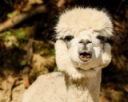
Cornell Cooperative Extension Specialists are working to develop a working group for fiber producers. This includes farms focusing on fiber as well as those who are harvesting fiber as a secondary crop from their livestock. Currently, the group is working to understand regional and state challenges within the fiber community to best develop collaboration and education efforts. If you are willing to share your challenges, please fill out this form. Your feedback is greatly appreciated!
Sneaky Pasture Weeds - Sedges and Rushes
Amy Barkley, Team Leader & Livestock Specialist
Southwest New York Dairy, Livestock and Field Crops Program

Pasture weeds are a thorn in the side for many graziers, but one particular group, the sedges and rushes, have a special notoriety. They like to inhabit poorer clay soils and thrive with wet feet. Mowing and tillage are ineffective in reducing their prevalence, as they can spread via underground structures and have dense root systems containing a large amount of stored energy. Unlike some other weeds, they unfortunately have low palatability, and if left unmanaged, can take over large portions of a pasture. Kitty O'Neal, Regional Field Crops and Forage Specialist, shares some more details about these plants' biologies and considerations for control.
NYS Schools Seeking Beef and Pork for Farm to School Programs
Amy Barkley, Team Leader & Livestock Specialist
Southwest New York Dairy, Livestock and Field Crops Program

Schools across NYS are looking for NY raised beef and pork products to use in their school lunch programs. These schools are looking to qualify for the 30% NY Initiative by spending at least 30% of their lunch budget on foods grown, raised, and produced in NY. Farm to School Coordinators and Farm to School support personnel across NYS are looking to source local beef and pork for lunch trays in their local communities. Product type, amount needed, delivery requirements, and price paid varies by school district. Farms interested in participating in the program can reach out to Becky O'Connor, WNY Farm to Institution Coordinator, Cornell Cooperative Extension - Harvest NY: rao84@cornell.edu or (845) 706-0293.
Register for the Virtual CORE Pesticide Training in January
Joshua Putman, Field Crops and Forage Specialist
Southwest New York Dairy, Livestock and Field Crops Program

Join us for another round of CORE training to obtain your pesticide license or receive 1.75 DEC recertification credits in the CORE category. Register online for January 12th from 9am - 10:50am or January 14th from 11am - 12:50pm for only $20. We will provide an overview of the basic information involved in the pesticide application certification process and will present the basics of Integrated Pest Management (IPM) as well as general pesticide safety, regulations and pesticide resistance. *IMPORTANT NOTE* Because of COVID-19, the DEC did not require growers whose licenses expired in November of 2019 or later to renew their applicator's license in order to buy & spray restricted use materials during the 2020 growing season. That discretionary policy is no longer in effect. If your license expired between November 2019 and November 23, 2020, you must obtain the full number of recertification credits and renew your license by February 23, 2021. If your license expires after November 23, 2020, you will follow the typical DEC guidelines. Feel free to contact Josh Putman with any questions. We hope to see you there!
Nonlethal Predator Management
Amy Barkley, Team Leader & Livestock Specialist
Southwest New York Dairy, Livestock and Field Crops Program

Where there is livestock, especially grazing livestock, there are predators waiting to take advantage of a free and easy meal. While the kneejerk reaction is to eliminate the pressure through lethal means, there are non-lethal methods that can be just as successful. This is especially true if a population of predators that lacks boldness and aggression. Methods of control include managerial, physical, and biological. Selecting the proper set of tools to match predator pressure and livestock type is key to a robust control program.
Virtual CORE Pesticide Training and DEC Recertification
Joshua Putman, Field Crops and Forage Specialist
Southwest New York Dairy, Livestock and Field Crops Program

*IMPORTANT NOTE* Because of COVID-19, the DEC did not require growers whose licenses expired in November of 2019 or later to renew their applicator's license in order to buy & spray restricted use materials during the 2020 growing season. That discretionary policy is no longer in effect. If your license expired between November 2019 and November 23, 2020, you must obtain the full number of recertification credits and renew your license by February 23, 2021. If your license expires after November 23, 2020, you will follow the typical DEC guidelines.
The Results are in for SWNY! Soybean Cyst Nematode Distribution in the State
Joshua Putman, Field Crops and Forage Specialist
Southwest New York Dairy, Livestock and Field Crops Program
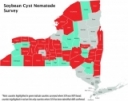
-Information prepared by Jaime Cummings, NYS Integrated Pest Management Program-
The 2020 statewide SCN survey revealed 23 NEW counties confirmed with at least one field positive for SCN. In SWNY, 3 out of 5 counties tested positive for SCN (Steuben, Allegany, and Chautauqua). This brings us to a total of 30 counties with SCN confirmations since 2016. The maps below illustrate the progress and results of our SCN testing over the past few years. Additional resources about SCN can be accessed at: https://www.thescncoalition.com/resources/tools-to-download. Also, check out these short videos titled "Let's Talk Todes" to learn more about managing soybean cyst nematode.
Farmland: To Purchase or to Lease?
Amy Barkley, Team Leader & Livestock Specialist
Southwest New York Dairy, Livestock and Field Crops Program

This year's growing season is coming to a rapid close. In thinking to the year ahead, how, where, and at what scale we want to farm may come back under the lens of consideration. Perhaps there is an opportunity to increase forage and crop production by expanding into more acreage. Maybe a chance to get into farming has presented itself. Whether you are looking to start a farm or are a seasoned farmer looking to expand the acreage of your enterprise, you can choose to either lease or purchase land.
End-of-Season Combine Clean-out Recommendations
Joshua Putman, Field Crops and Forage Specialist
Southwest New York Dairy, Livestock and Field Crops Program

For many growers in Southwest New York, fall harvest is coming to an end. Now is the time to prepare harvest equipment for winter storage. Proper preparation reduces the likelihood of animals nesting in the equipment which can lead to electrical damage resulting in fire, improves the function and longevity of parts, and puts a closure to the 2020 growing season.
Cornell Discussion Group on Commercial Small Ruminant Management Formed
Amy Barkley, Team Leader & Livestock Specialist
Southwest New York Dairy, Livestock and Field Crops Program

This discussion group was formed to connect sheep and goat farmers, extension staff, researchers, and service providers to share experiences and information on sheep and goat management. The group will focus on commercial production of all types including goat and sheep dairies, solar array grazers, traditional meat and fiber operations and grass-fed farms. This discussion group will meet virtually via ZOOM at 7:30 pm on the third Thursday of every month. The first meeting will be November 19th at 7:30 pm to focus on "winter feeding". If you are interested in participating in this discussion group, please fill out this online Google Form!
Spotted Lanternfly Confirmed Found in NYS
Amy Barkley, Team Leader & Livestock Specialist
Southwest New York Dairy, Livestock and Field Crops Program

The Spotted Lanternfly, a foreign pest known to be highly destructive in crops including maple trees, apple trees, grape vines, and hops, has been identified on Staten Island, areas of the Hudson Valley, and in the Southern Tier. Monitoring is ongoing, and the public is urged to continue to report findings of the insects and egg masses through the colder months to Ag and Markets at spottedlanternfly@agriculture.ny.gov. Early reporting can help with the development of targeted management plans to slow the establishment and spread of this insect.
Managing Corn Rootworm and a New Control Option for New York Farmers
Joshua Putman, Field Crops and Forage Specialist
Southwest New York Dairy, Livestock and Field Crops Program
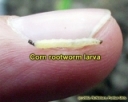
Biological Control of Corn Rootworm with Persistent Entomopathogenic Nematodes: An opportunity to try them on your farm
*Elson Shields, Entomology, Cornell University, Ithaca, NY
Corn rootworm (CRW) is the number one pest of corn in both NY and the U.S. Recent NY field data are showing that the biocontrol nematodes being released against alfalfa snout beetle are also having an impact on CRW after the field is rotated from alfalfa into corn. Research in NNY for the past 18 years has shown that a single field application of persistent biocontrol nematodes inoculates the field for multiple years and across rotations. In 75 fields following a typical alfalfa-corn rotation, not only did the biocontrol nematodes persist for multiple years at sufficient populations to suppress soil insects, but biocontrol nematode populations were higher after 4-years of corn than in the alfalfa before being rotated to corn. These results suggested the biocontrol nematodes were attacking CRW during the corn years of the rotation.
NY Farm Service Agency to Host Meetings on Coronavirus Food Assistance Program 2
Amy Barkley, Team Leader & Livestock Specialist
Southwest New York Dairy, Livestock and Field Crops Program

The U.S. Department of Agriculture's (USDA) Farm Service Agency (FSA) in New York is hosting two meetings about the Coronavirus Food Assistance Program 2 (CFAP 2). The first meeting will be Tuesday, November 17th at noon, and the second, which will focus on the specialty crops portion of CFAP 2, will be Wednesday, November 18th at noon. FSA is accepting applications for CFAP 2 through December 11, 2020. To find the latest information on CFAP 2, eligible crops, payment rates, and the application and payment calculator, visit farmers.gov/cfap.
Preparing Poultry for Winter
Amy Barkley, Team Leader & Livestock Specialist
Southwest New York Dairy, Livestock and Field Crops Program

As the daylight hours continue to wane and the cold begins to weave its way across the landscape, it is apparent that winter is coming, and our minds shift to preparing our livestock for winter. Poultry are hardier than we think, and with a few modifications to housing and care, they will be prepared for the bitter winds and incessant snowfall which are part of life in SWNY.
2020 Corn Silage Overview Available
Joshua Putman, Field Crops and Forage Specialist
Southwest New York Dairy, Livestock and Field Crops Program

2020 Corn Silage Overview Available
-Provided by Joe Lawrence and Allison Kerwin - PRO-DAIRY at Cornell and Department of Animal Science-
The 2020 NY & VT Corn Silage Hybrid Evaluation Program Report is now available. The growing season across much of the Northeast started out with below average temperatures, but despite the cool start, good growing conditions allowed for a timely fall harvest. Each year brings its own challenges and opportunities. It is important to evaluate the data in the context of your own farm when selecting corn hybrids. The top performing hybrid at any location may not be a good fit for another location or soil type. The PDF version can be accessed here or for additional information about hybrid performance and placement, contact Josh Putman at jap473@cornell.edu or 716-490-5572.
Important Notice for Licensed Pesticide Applicators!
Joshua Putman, Field Crops and Forage Specialist
Southwest New York Dairy, Livestock and Field Crops Program

Important Notice for Licensed Pesticide Applicators!
Because of COVID-19, the NYS DEC did not require growers whose licenses expired in November of 2019 or later to renew their applicator's license in order to buy & spray restricted use materials during the 2020 growing season. That discretionary policy is no longer in effect. If your license expired between November 2019 and Nov. 23, 2020, you must obtain the full number of recertification credits and renew your license. Starting Nov. 24, 2020, you cannot to buy or apply pesticides until your license has been renewed. The DEC is giving growers a 90-day grace period before adding penalty credits to overdue renewal applications. Growers should complete COVID-delayed license renewals by February 23, 2021. If your license expires after Nov. 23, 2020, you will follow the typical DEC renewal process.
New York State Forage Exchange Available to Producers Buying and Selling Forages
Amy Barkley, Team Leader & Livestock Specialist
Southwest New York Dairy, Livestock and Field Crops Program

The New York State Forage Exchange is a free-to-use, open access site hosted by Cornell Cooperative Extension where buyers and sellers of forages can meet. It is free to sign up and use the exchange, which can be another tool to keep in mind as we head into winter following a year where forage harvests have been variable. Corn and hay are the two main forage categories on the site, though individual ads contain information including forage type, harvest date, volume, format (large round, small square, by the ton, etc.), and price. The exchange can be found at https://nysforageexchange.com/
The Importance of Testing Manure

Manure nutrients can vary from many different factors. Before applying it to your fields, especially if you're goal is to meet the nutritional needs of your crops, take the moment to get it sampled and tested. This article shares how to do that.
EPA Announces 2020 Dicamba Registration Decision
Joshua Putman, Field Crops and Forage Specialist
Southwest New York Dairy, Livestock and Field Crops Program

EPA Announces 2020 Dicamba Registration Decision
October 27, 2020 — On Tuesday, U.S. Environmental Protection Agency (EPA) Administrator Andrew Wheeler announced that EPA is approving new five-year registrations for two dicamba products and extending the registration of an additional dicamba product. All three registrations include new control measures to ensure these products can be used effectively while protecting the environment, including non-target plants, animals, and other crops not tolerant to dicamba. "With today's decision, farmers now have the certainty they need to make plans for their 2021 growing season," said EPA Administrator Andrew Wheeler. "After reviewing substantial amounts of new information, conducting scientific assessments based on the best available science, and carefully considering input from stakeholders we have reached a resolution that is good for our farmers and our environment."
Corn Diseases and Mycotoxin Contamination of Corn Grain in Southwest New York
Joshua Putman, Field Crops and Forage Specialist
Southwest New York Dairy, Livestock and Field Crops Program

Mycotoxin is a general term for a poison produced by a fungus and can be toxic when inhaled, absorbed through the skin, or consumed at very low concentration levels. Corn and small grain cereals are especially prone to mycotoxin accumulation in their seed tissue. In the past, it was believed that the fungus affected grain only during the postharvest stage, particularly when grain was stored under suboptimal conditions (hot and humid/moist). Although these factors can promote fungal growth in storage, this occurs during the growing season as well.
Ten Things You Should Know Before Leasing Land for Solar Development
Amy Barkley, Team Leader & Livestock Specialist
Southwest New York Dairy, Livestock and Field Crops Program

Development of land for solar energy projects is becoming common across the state of New York. These large projects require land leases from landowners, which can extend 40-50 years. While leasing land for solar development can provide supplemental income to a landowner, there are some things to keep in mind before signing your name on the dotted line. Daniel Brockett of Penn State Extension and George Thompson of Wilson, Thompson, and Cisek, LLC, help bring some of these important considerations to light.
Dairy x Beef Use in NY Survey
Alycia Drwencke, Dairy Management Specialist
Southwest New York Dairy, Livestock and Field Crops Program

Do you use Dairy x Beef genetics? Do you work with a farm that does? CCE needs your help! The usage of beef on dairy has steadily grown over the last few years and we are working towards understanding the trends and markets of this strategy in NYS. Please consider filling out this survey: https://cornell.ca1.qualtrics.com/jfe/form/SV_4HHU14xa0XN4xg1. Which will take approximately 15 minutes to take. The survey can also be started and accessed later for completion. For questions, please contact Margaret Quaassdorff (maq27@cornell.edu) or Betsy Hicks (bjh246@cornell.edu), Regional Dairy Specialists with Cornell Cooperative Extension.
Fall Feeder Calf Prices Expected to be Equal to or Slightly Higher Than 2019
Amy Barkley, Team Leader & Livestock Specialist
Southwest New York Dairy, Livestock and Field Crops Program

The most recent beef market report indicates that strong consumer demand for beef is continuing to support stable beef prices for NYS farmers. Unfortunately, a local major packer had to temporarily close earlier in the month, resulting in reduced prices for cull cows, which exceeds the typical seasonal decline in price. Prices for finished cattle are slightly lower than this time last year. Feeder prices are promising, with projections indicating that 550 lbs feeders will trade either at or above last year's prices. Bull calf values continue to improve on average, with premiums for beef cross bull calves bringing in $69/head more than Holstein bull calves. More can be read in Dr. Mike Baker's Livestock Report, here: https://cpb-us-e1.wpmucdn.com/blogs.cornell.edu/dist/3/3955/files/2020/10/LivestockUpdateOct-2-2020.pdf.
Taking, Preparing, and Submitting a Soil Sample for Testing
Amy Barkley, Team Leader & Livestock Specialist
Southwest New York Dairy, Livestock and Field Crops Program

Soil testing is the easiest way to identify and quantify nutrient imbalances in our agricultural soils. It will identify major nutrients such as nitrogen, phosphorous, and potassium as well as pH, organic matter, and some micronutrients. Following a proper sampling technique is essential to achieving a representative sample, and preparing both the sample and submission form appropriately will allow for complete test results in addition to precise nutrient and liming recommendations. For more information about soil testing or report interpretation, please reach out to Amy Barkley, Livestock and Beginning Farm Specialist at amb544@cornell.edu or (716) 640 - 0844 or Josh Putman, Forage and Field Crop Specialist at jap473@cornell.edu or (716) 490-5572.
Preventing the Spread of Troublesome Weeds at Harvest in Southwest New York
Joshua Putman, Field Crops and Forage Specialist
Southwest New York Dairy, Livestock and Field Crops Program

-Article information adapted from PennState Extension written by Dr. John Wallace and Heidi Reed-
Resistant weeds cause significant yield loss, increased production costs, and are becoming a bigger problem every year in New York. Farmers rarely proactively manage weeds to prevent or delay selection for herbicide resistance. They usually increase the adoption of integrated weed management practices only after herbicide resistance has occurred. Our most problematic herbicide-resistant weeds, like horseweed (marestail), waterhemp, and Palmer amaranth, can easily spread from one field, or one farm, to the next, as seeds get trapped in/on tillage, planting, and harvest equipment and ride field-to-field this time of year.
NESARE Invites Applicants for their 2021 Farmer Grant Program
Amy Barkley, Team Leader & Livestock Specialist
Southwest New York Dairy, Livestock and Field Crops Program
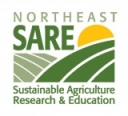
Northeast SARE is now accepting applications for its Farmer Grant Program. Up to $15,000 is available per project. The online system opens on Oct. 1 and applications are due by 5 p.m. on Nov. 17, 2020. The Farmer Grant Program funds farmers to explore new concepts in sustainable agriculture on production, marketing, labor, farm succession, social capital and other areas through experiments, surveys, prototypes, on-farm demonstrations or other research and education techniques. Grants may not be used to help start or expand farm businesses. Application materials, including detailed instructions and supporting documents, are posted at www.northeastsare.org/FarmerGrant. A webinar on how to apply is scheduled for Tuesday, October 6 from 12pm - 1pm. Please contact Amy Barkley, Livestock and Beginning Farm Specialist, at 716-640-0844 or amb544@cornell.edu if you are interested in applying for a SARE Farmer Grant.
Local Frost Advisories - What it Could Mean for Corn Producers in Southwest New
Joshua Putman, Field Crops and Forage Specialist
Southwest New York Dairy, Livestock and Field Crops Program

Frost can mean yield loss for crop producers, although the severity of damage varies based on crop maturity, topographical features and local climate conditions. A corn-killing freeze occurs when temperatures fall to 32 F for several hours or 28 F for a few minutes.
Second Round of Coronavirus Food Assistance Program for Farms Now Available
Alycia Drwencke, Dairy Management Specialist
Southwest New York Dairy, Livestock and Field Crops Program

The USDA's Farm Service Agency's (FSA) recently opened the second round of Coronavirus Food Assistance Program (CFAP) for agricultural businesses. If you are an agricultural producer whose operation has been affected by COVID-19, you are likely eligible for this second round of support. FSA will accept applications from September 21 - December 11, 2020 from agricultural businesses for this support. A full list of eligible commodities can be found here. For more information, or to apply, visit www.farmers.gov/cfap or contact your local FSA office. In the Southwest NY region, the county offices can be reached at: Allegany (585) 268-5133; Cattaraugus (716) 699-2375; Chautauqua (716) 664-2351; Erie (716) 652-1400; Steuben (607) 776-7398.
'Tis the Season for Deer Worm, written by Dr. tatiana Stanton
Amy Barkley, Team Leader & Livestock Specialist
Southwest New York Dairy, Livestock and Field Crops Program

The wind is becoming crisp. Leaves are falling. The world is getting ready to go to sleep, and most small ruminant producers can breathe a sigh of relief as most of the internal parasites that plague their stock also retire for the winter. However, there is one parasite that ramps up this time of year: meningeal worm, also known as deer worm. This parasite is transferred through the accidental ingestion of snails, slugs, and their slime, where it then migrates into small ruminants' spinal cords. Here, it has the potential to cause damage to the animals' central nervous systems. In this article, Dr. Stanton reviews the typical signs of a deer worm infection and potential treatments to discuss with your veterinarian.
Lime Guidelines for Field Crops in New York
Amy Barkley, Team Leader & Livestock Specialist
Southwest New York Dairy, Livestock and Field Crops Program

Lime Guidelines for Field Crops in New York, written by Quirine M. Ketterings, W. Shaw Reid, and Karl Czymmek
Liming is an essential component of successful pasture and field crop management in the SWNY region. With most of our soils being heavy and acidic, plant growth can suffer. Yields may only weigh in at a fraction of their potential, and stand persistence, in the case of pastures and hay fields, can suffer. Fall is an excellent time of year to apply lime because it allows the material to begin to neutralize pH before the next season. Once soil testing has been completed and a liming recommendation is in hand, it is time to make decisions on the type of lime to use, time of year to apply it, and how it should be applied. This guideline from Cornell's Department of Crop and Soil Sciences explores these questions at length to help with the decision-making process. If you have questions about liming your pastures, reach out to Amy Barkley, Livestock and Beginning Farm Specialist at amb544@cornell.edu or (716) 640 - 0844. Questions on liming field crops can be directed to Josh Putman, Forage and Field Crop Specialist at jap473@cornell.edu or (716) 490-5572.
Monitoring Fields for Soybean Cyst Nematode in Southwest NY
Joshua Putman, Field Crops and Forage Specialist
Southwest New York Dairy, Livestock and Field Crops Program

We need your help! Take the test. Beat the pest.
Soybean Cyst Nematode (SCN) is the most destructive pest of soybean in the United States. Yield losses in soybean due to SCN have been estimated at more than $1 billion annually in the U.S. Because the nematode can be present in fields without causing obvious aboveground symptoms, yield losses caused by SCN are often underestimated.
Consider Planting Winter Wheat After the Hessian Fly-Free Date
Joshua Putman, Field Crops and Forage Specialist
Southwest New York Dairy, Livestock and Field Crops Program

As fall approaches, growers should consider the recommended timing for planting winter wheat. For years, the standard recommendation for profitable wheat production in New York has been to plant wheat after the Hessian fly-free date. This recommendation is based on the fact that Hessian fly adults would no longer be alive as there are no remedial measures available to save an infested crop. An article prepared by Ken Wise, with the New York State Integrated Pest Management Program, discusses the recommend timing to plant wheat to avoid injury from the Hessian fly as well as a detailed description about this pest. For more information about winter cereal production, contact Josh Putman at 716-490-5572 or jap473@cornell.edu.
Don't Forget to Complete the 2020 Census!
Alycia Drwencke, Dairy Management Specialist
Southwest New York Dairy, Livestock and Field Crops Program

Have you completed the 2020 Census? Completing the 2020 Census will determine where over $675 billion in federal funding is spent in states and communities for the next ten years. When filling out the Census, your personal information is kept confidential by law. Whether it's funding in communities across your state or helping determine the number of seats your state will have in the U.S. House of Representatives—every count makes an equal impact. Be sure you are counted and visit 2020Census.Gov for more information.
Aspirin after calving can provide relief to dairy cows, increase milk production
Alycia Drwencke, Dairy Management Specialist
Southwest New York Dairy, Livestock and Field Crops Program

Recent research from Penn State University, over viewed by DairyBusiness shows benefits to providing pain relief to cows after calving. Dairy cows that received a short course of anti-inflammatory medication after calving had lower metabolic stress and produced more milk than untreated cows, according to researchers, who say the regimen they tested could be adopted more easily by producers than previously studied treatment strategies. For additional details, read the full article or reach out to Dairy Management Specialist, Alycia Drwencke.
Corn Silage Harvest
Joshua Putman, Field Crops and Forage Specialist
Southwest New York Dairy, Livestock and Field Crops Program

Corn silage harvest is under way in New York. An article recently published by Cornell CALS PRO-DAIRY, describes the Corn Silage Processing Score (CSPS), implementation of kernel processing, and how to monitor processor performance. In a second article, they explain the effect of corn plant characteristics on corn silage processing scores. Listen to the newly published PODCAST series titled "Corn Silage Harvest Considerations." For more information, contact Field Crops Specialist Josh Putman.
Managing Pinkeye in Cattle
Amy Barkley, Team Leader & Livestock Specialist
Southwest New York Dairy, Livestock and Field Crops Program
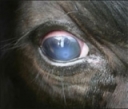
Pinkeye is a highly contagious disease of cattle, which can cause discomfort for the animal, blindness, and production losses. It develops when the presence of the causative bacterium, Moraxella bovis, couples with environmental factors that weaken the eye, allowing the bacteria to enter and begin the infection. Early identification and treatment are important in addition to Integrated Pest Management (IPM) measures to control face flies, which are known to rapidly spread the disease. For more information on management options, contact Livestock and Beginning Farm Specialist, Amy Barkley, at amb544@cornell.edu or (716) 640-0844.
2020 Changes to New York Farm Labor Laws: Recording & Presentation
New York's farm labor laws changed greatly with the 2019 Farm Laborer Fair Labor Practices Act (FLFLPA), the laws changed again this year when several amendments were included in the Budget Act in 2020. On August 17, 2020, Cornell Ag Workforce Development and Northeast Dairy Producers Association (NEDPA) recorded a webinar to help all farmers understand the changes. Find below links to a PDF of the presentation with active links and a recording of "2020 Updates to New York Farm Labor Laws."
- Link to a PDF of the meeting presentation, including links to additional information
- Link to a recording of the webinar
NYS Forage Exchange Website Announced
Joshua Putman, Field Crops and Forage Specialist
Southwest New York Dairy, Livestock and Field Crops Program

The NYS Forage Exchange provides a free system to match potential sellers and buyers of forage within New York State. Sellers can easily register within the system and then post the forage they have available to sell. Potential purchasers can browse the advertisements, and then contact the seller through email for additional information or to complete purchase arrangements.
Vigilance and Biosecurity Can Help Reduce Spread of Rabbit Hemorrhagic Disease
Amy Barkley, Team Leader & Livestock Specialist
Southwest New York Dairy, Livestock and Field Crops Program

RHDV2-Rabbit Hemorrhagic Disease is a fatal disease of rabbits, causing sudden death in both domestic and wild rabbit populations. Although not yet detected in SWNY, it was found in New York City in March 2020, and has been spreading across multiple states including Pennsylvania, Ohio, New Mexico, Arizona, California, Colorado, Nevada, and Texas. This is a reportable animal disease in NY, and reports should be made to the NYS Department of Agriculture or the USDA as soon as symptoms are identified. More about identification of infected individuals and prevention of this virus can be found in this fact sheet, compiled by USDA-APHIS.
Forage Inventory Calculator Tool for Beef Producers
Amy Barkley, Team Leader & Livestock Specialist
Southwest New York Dairy, Livestock and Field Crops Program

As we move into fall, it's important to ensure that there are enough stored forages on the farm to get beef cattle through the winter. One of the more common stored forages is hay. Using this Excel spreadsheet calculator developed by Bill Halfman with the University of Wisconsin Extension, you can enter data from the farm to find the number of bales it will take to make it until the pastures green up again in the spring. The results you get here will also serve as an early indication as to whether or not additional hay needs to be purchased.
USDA Announces Organic Certification Cost Share Program
Amy Barkley, Team Leader & Livestock Specialist
Southwest New York Dairy, Livestock and Field Crops Program

The United States Department of Agriculture (USDA) is administering a cost-share program for current organic producers to renew their certifications. Up to 50% of eligible certification costs have the potential to be reimbursed through the program, with a maximum of $500 per certification. More information can be found here: https://www.fsa.usda.gov/Assets/USDA-FSA-Public/usdafiles/FactSheets/organic_certification_cost_share_program-fact_sheet.pdf
Annual Cool-Season Forages for Emergency Plantings
Amy Barkley, Team Leader & Livestock Specialist
Southwest New York Dairy, Livestock and Field Crops Program

When pasture and hay fields produce sub optimally because of adverse weather, severe weed pressure, stand age, or other causes, cool season annuals can be planted as emergency measure to boost forage stores for the upcoming winter and early spring. Even if forage is readily available, this method can be used to provide high quality forage in short order. This article by Livestock Specialist Amy Barkley explores species selection and planting/harvest considerations.
Beef Farm Business Summary (BFBS) Helps Farmers Calculate Cost of Production, Tr
Katelyn Walley, Business Management Specialist and Team Leader
Southwest New York Dairy, Livestock and Field Crops Program
BFBS is a free and confidential program that is now available to livestock producers across the state, including our Southwest New York Region. This is an opportunity to collect data on individual farms and analyze the profitability of the businesses. Farm Business Management Specialist, Katelyn Walley-Stoll, will work with farms to determine what information is needed and complete the analysis, providing the farm with an opportunity to look at areas of production, develop plans to increase profitability, track business growth over time, and calculate a cost of production.
Register for the Virtual Cornell Hemp Field Day
Joshua Putman, Field Crops and Forage Specialist
Southwest New York Dairy, Livestock and Field Crops Program

Due to COVID-19 safety restrictions, this year's Hemp Field Day is being presented virtually. Pre-Register now to attend this event!
SWNY Field Crop Chronicle - 8/5/2020
Joshua Putman, Field Crops and Forage Specialist
Southwest New York Dairy, Livestock and Field Crops Program

The Southwest NY Diary, Livestock, Field Crops Program is excited to announce a new method of delivering field crop topics and information!
Are Your Beef Cattle Getting Enough Quality Water?
Amy Barkley, Team Leader & Livestock Specialist
Southwest New York Dairy, Livestock and Field Crops Program

Beef cattle have water needs that vary based on weight, diet, and temperature. Providing ample, clean water sources will help to maintain good health, rate-of-gain, and welfare through the hot summer months and beyond. This article, adapted from the fact sheet developed by Ted G. Dyer of the University of Georgia Extension, explains general rules of thumb for how much water should be provided to cattle as well as common water anti-quality parameters to check.
Early-Season Corn Disease: Northern Corn Leaf Blight
Joshua Putman, Field Crops and Forage Specialist
Southwest New York Dairy, Livestock and Field Crops Program

In 2019, northern corn leaf blight (NCLB) appeared throughout the Southwest New York region. Weather conditions in 2020 are favorable and might lead to disease infestations in SWNY.
Don't Miss Out On The Next CORE Pesticide Training July 21st, 6PM-7:50PM!
Joshua Putman, Field Crops and Forage Specialist
Southwest New York Dairy, Livestock and Field Crops Program

Our first online CORE pesticide training was a huge success with great participation from the group. The SWNY Dairy, Livestock, and Field Crops team is hosting a second training this coming Tuesday, July 21, from 6-7:50PM.
Heat-Stress and Lack of Moisture on Corn and Soybeans in SWNY
Joshua Putman, Field Crops and Forage Specialist
Southwest New York Dairy, Livestock and Field Crops Program

Last week, SWNY was experiencing severe heat as well as symptoms of drought stress and seen in many crops. Corn leaves were rolling, soybean leaves were flipped, leaf tissue was turning grey, and there was no sight of rain.
APHIS Seeks Comment on the Transition to RFID Tags as the Only Official Identifi
Amy Barkley, Team Leader & Livestock Specialist
Southwest New York Dairy, Livestock and Field Crops Program
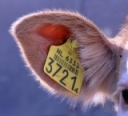
The USDA's Animal Health and Plant Inspection Service (APHIS) is looking for public comment on their proposal to make Radio Frequency IDentification (RFID) tags the only official ear tag approved for use in cattle (dairy, beef, bison) by January 1, 2023 and are seeking input on the proposed timeline for implementation. The transition would phase out metal tags, which are now currently allowed to be used in addition to RFID tags. While there would be no change to the existing regulations, these tags would allow for more accurate disease traceability by APHIS. Public comments will be accepted through October 5th, 2020 by going to: https://www.federalregister.gov/d/2020-14463.
Management of Drought on Pasture
Amy Barkley, Team Leader & Livestock Specialist
Southwest New York Dairy, Livestock and Field Crops Program

SWNY is beginning to encounter very dry conditions, where precipitation has been isolated to pop-up showers and looking to the sky for rain has started to become the new normal. As of July 9, the US Drought Monitor, indicated that all of SWNY is abnormally dry. Just last week, only the eastern side of Steuben County was listed in this classification, and a week prior to that, the condition was isolated to the northeastern part of the state and Finger Lakes region. Dry conditions hit pastures hard. Proper forage management to ensure sustainable nutrition for livestock as well as vitality of the pasture should be a priority, especially if those pastures are a primary source of livestock feed. This article explores strategies for pasture and livestock, and was adapted from Doo-Hong Min, Michigan State University Extension and Derrell Peel, Oklahoma State University by Dr. Mike Baker.
Preparing Livestock Producers for Drought Conditions - Farmer Resources
Amy Barkley, Team Leader & Livestock Specialist
Southwest New York Dairy, Livestock and Field Crops Program

As more of the region heads into abnormally dry conditions, it's important to keep in mind strategies to keep herds and flocks healthy, hydrated, and fed. Dr. Mike Baker has prepared a series of drought resources which can be found on the Beef Cattle Management page. Strategies to stretch forages, change numbers of stock, wean early, and keep health up with enhanced nutrition are all ways to ensure that your stock makes it through the drier times. This list contains articles covering various drought-related topics from livestock educators across the state.
Spreading Dogbane - A problematic weed in SWNY
Joshua Putman, Field Crops and Forage Specialist
Southwest New York Dairy, Livestock and Field Crops Program

Josh Putman, Field Crops Specialist with the SWNY Dairy, Livestock & Field Crops program recently ran across a plant in a hay field that had not been worked for a few years and was very difficult to identify. Pictures of the weed were sent to Cornell's Weed Ecology and Management Laboratory and correctly identified. Spreading dogbane, Apocynum androsaemifolium, is in the same family as milkweeds and swallowworts, and the same genus as hemp dogbane. This perennial plant is found in open, dry areas and in disturbed habitats throughout New York and most of the US and Canada.
Dicamba Notice to Users, Distributors and Sellers - June 29, 2020
Joshua Putman, Field Crops and Forage Specialist
Southwest New York Dairy, Livestock and Field Crops Program

On June 3, 2020, the United States Court of Appeals for the Ninth Circuit vacated EPA's registration of three products containing the active ingredient dicamba, which effectively cancelled their federal registrations. The three products are: Xtendimax with Vaporgrip Technology, Engenia, and FeXapan.
On June 8, 2020, in response to the Court's decision, EPA issued a Cancellation Order for these three products. In light of the Court's decision associated with these registrations and the provisions of EPA's Cancellation Order to implement that decision, DEC is taking these actions:
1) Registrations - The registrations of the three products will be cancelled as of July 31, 2020 in accordance with the provisions of ECL Section 33-0713. Thirty days' notice will be provided to the registrants of these products.
2) Distribution or Sale - Distribution or sale of existing stocks of the three products shall be limited as follows:
- Distribution or sale by registrants is prohibited immediately, except for distribution for the purposes of proper disposal.
- Distribution or sale of products that are already in the possession of someone other than the registrant is permitted only for disposal or to facilitate return to the registrant or a registered establishment.
- Distribution or sale by commercial applicators is permitted to facilitate use no later than July 31, 2020.
3) Use - All use, including storage of open containers, is prohibited after July 31, 2020.
Questions about dicamba may be directed to pesticidecompliance@dec.ny.gov or ppr@dec.ny.gov or by calling 518-402-8727.
Ecological Control of Pasture Flies
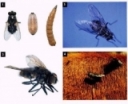
Pasture flies are more than a mere nuisance; they can result in production losses on cattle, sheep, goats, and other pastured livestock. Around June, the weather is warm enough that so long as there's enough moisture around, the populations of these pests will explode. A robust control program is necessary to prevent these populations from getting out of control. While chemical controls may work now, the flies will build resistance over time. In this article, specialists from the South Central NY Dairy and Field Crops Team review the top three fly pests: face flies, horn files, and stable flies, as well as integrated pest management techniques of pastures and barns to help keep the populations low, thereby reducing the need for chemical control methods.
Determining the Finish of Market Lambs
Amy Barkley, Team Leader & Livestock Specialist
Southwest New York Dairy, Livestock and Field Crops Program

Consumers of lamb demand a high-quality product, and are willing to pay a premium price for it should it meet or exceed their expectations. This consideration is especially important for those farmers marketing directly to the consumer; there is no farm anonymity here, and the consumer will know exactly the quality they can expect from you. That said, regardless of if a farm is selling direct or selling to a larger processor, it is known that an animal that has the proper ratio of fat to muscle will have cuts with great flavor, juiciness, and tenderness. By selling quality lamb or young mutton, there is potential to charge a premium price if selling direct, getting paid a premium price if selling to a processor, and the potential to keep a direct market consumer coming back again and again. In this article, Livestock Specialist, Amy Barkley, outlines finishing determinations shared by the National Sustainable Agriculture Information Service (ATTRA).
URI Offers Free Fecal Egg Count Analyses to Assist New England Farmers
Amy Barkley, Team Leader & Livestock Specialist
Southwest New York Dairy, Livestock and Field Crops Program

The University of Rhode Island is offering free fecal egg count services to members of the National Sheep Improvement Plan (NSIP) who are looking to generate Estimated Breeding Values for parasite resistance and non-NSIP members living in NY state who have a history with problems with gastrointestinal nematodes. Producers must be able to obtain and ship fecal samples within 4 weeks of each other, and animals must not have been dewormed within 4 weeks of sampling. Samples will be accepted for analysis through September 30th, 2020. Please contact Holly Burdett or Dr. Katherine Petersson, University of Rhode Island at urisheepandgoat@etal.uri.edu to obtain appropriate fecal sampling and shipping instructions. Please include your name, farm name, mailing address, and whether an NSIP member. More information can be found here: https://web.uri.edu/sheepngoat/files/URI-NESARE-2020-FEC-Announcement-Final.pdf.
NYSDOL Updates Guidance FAQ About NY Farm Labor Laws by Richard Stup

Richard Stup with Cornell Agricultural Workforce Development shares updates on the guidance for NY farm labor laws.
The New York State Department of Labor (NYSDOL) recently released a new set of frequently asked questions (FAQ) that address the 2019 Farm Laborer Fair Labor Practices Act (FLFLPA) and the recent changes to FLFLPA that were made in the New York budget process. Find the FAQ here: https://labor.ny.gov/immigrants/farm-laborers-fair-labor-practices-act/flflpa-frequently-asked-questions.pdf
Pay special attention to the set of questions under the heading "Coverage." This section includes NYSDOL's interpretation of who is a "farm laborer" and who is not. Be aware that being family doesn't just require the common definition of the concept. As question 6 indicates, to be defined as family also requires a certain sense of obligation to the business and that pay is not based on hours or days of work. The law is in effect now but NYSDOL continues to be prevented from enforcing it with respect to family members and other exempt employee by the temporary restraining order issued by a federal judge in Buffalo. This situation will likely continue until the lawsuit is resolved.
Cornell Agricultural Workforce Development and other industry organizations are continuing to seek information and clarification from NYSDOL about important details and questions that the new laws raise.
Poultry Processing Waste Management via Composting
Amy Barkley, Team Leader & Livestock Specialist
Southwest New York Dairy, Livestock and Field Crops Program

Now that the weather is finally consistently warm and pastures are lush, most producers of pastured broilers and ducks are harvesting their first flocks or beginning their flock rotation cycles. Those who are raising turkeys and geese are also getting ready to or have already placed their birds in preparation for the fall and winter holiday seasons. As the harvest windows for these birds arrive, producers processing their own birds or processing birds for others need to arrange for a way to dispose of the waste from processing. These waste products include blood, feathers, offal, heads, feet, rinse water, and cooling water and must be properly dealt with to reduce their environmental impact. Additionally, and fortunately, what we traditionally may see as waste products can go on to live a second life as nutrients for other crops on the farm though composting while eliminating the costs of having to pay for other disposal services. Livestock Specialist, Amy Barkley, explores the basics poultry processing waste composting in this article. More information on composting poultry processing waste, other butchery waste, and livestock mortalities can be found on the Cornell Waste Management Institute Website.
Characteristics of Determining Market Readiness of Finished Cattle
Amy Barkley, Team Leader & Livestock Specialist
Southwest New York Dairy, Livestock and Field Crops Program

Regardless of how beef animals are finished, either by grass, grain, or a combination, market weight animals that are sent to the auction or processor should be finished properly. Finishing is the process where an animal is fed a high energy diet to help them put on intramuscular fat, resulting in desirable marbling, which leads to a juicer, more tender, and more flavorful cuts. These desirable quality characteristics result in higher prices at market and a better experience for consumers. Finishing looks different on a purebred steer vs a dairy cross or a heifer vs a steer, but regardless of an animal's genetic background, these animals all have characteristics which show that they are ready to go to market. This article reviews the characteristics of finishing as described in the Cornell Small Farms video, "Determining Market Readiness of Finished Cattle", narrated by Dr. Mike Baker, found here: https://www.youtube.com/watch?v=HrF5aCEAI-0&feature=emb_title
Black Cutworm and True Armyworm Moth Captures and Weed Pressure in SWNY
Joshua Putman, Field Crops and Forage Specialist
Southwest New York Dairy, Livestock and Field Crops Program

This week, Field Crops Specialist, Josh Putman, with the Southwest NY Dairy, Livestock, and Field Crops program scouted traps and fields throughout the region. In Avoca, NY, both moth species were present having 7 cutworm and 10 armyworm; not much larvae feeding was found. In Springville, NY 3 black cutworm and 3 armyworm were collected; we now have evidence of cutworm feeding on corn plants. According to Dr. Mike Stanyard of the NWNY Dairy, Livestock, and Field Crops team, it is important to be out scouting your fields now for pest damage and economic threshold that may require management. In addition, with the warm temperatures and increased day length, we are seeing an increase of weed pressure in our field crop production systems. Summer annual weeds compete for sunlight, nutrients and water. Don't let these pests rob your crop yields!
Dung Beetles Aid in Reducing Flies and Gastrointestinal Parasites in Pastures
Amy Barkley, Team Leader & Livestock Specialist
Southwest New York Dairy, Livestock and Field Crops Program

Dung Beetles Aid in Reducing Flies and Gastrointestinal Parasites in Pastures, by Ken Wise, Dr. Mike Baker, and Jaime Cummings
Dung beetles may be unassuming members of pasture ecology, but are excellent managers of nutrients and pasture parasites. Given the right populations and conditions, entire manure pats can be stored and consumed by these insects in 36-48 hours. Under ideal conditions, they can control 95% of horn flies, and not only compete with horn flies, but also gastrointestinal parasites for the manure in the pats. That said, many commonly used pasture pesticides, both internal and external, have active ingredients which have the unintended consequence of being detrimental to dung beetles. In this newly published article, Ken Wise, Livestock and Field Crops IPM Extension Educator, reviews ways to increase dung beetle populations, those pesticides which are less toxic to dung beetle populations, and lists various feed-through insecticides. The article in its entirety can be found here: https://ecommons.cornell.edu/bitstream/handle/1813/69933/dung-beetles-FS-NYSIPM.pdf?sequence=2&isAllowed=y
Cutworm and Armyworm Moth Captures Increase Significantly in Southwest NY
Joshua Putman, Field Crops and Forage Specialist
Southwest New York Dairy, Livestock and Field Crops Program

Field Crops Specialist, Josh Putman, with the Southwest NY Dairy, Livestock, and Field Crops program scouted traps and fields throughout the region. This week, moth captures increased significantly at both locations in the region. In Avoca, NY, both moth species were present having 13 cutworm and 11 armyworm. Higher numbers were captured in Springville, NY with 21 black cutworm and 13 armyworm collected; no evident feeding from larvae was present in corn fields that were emerged. Field Crops Specialists from the Northwest NY Program are finding much higher numbers of both pests in their traps this week. Correct identification of the larvae and larvae feeding can be difficult; contact your local extension specialist for proper identification and management.
May 22nd 2020 NY Beef Industry Update
Amy Barkley, Team Leader & Livestock Specialist
Southwest New York Dairy, Livestock and Field Crops Program

More good news for beef producers: Processing capacity is now estimated to be around 70%, and is continuing to rise, albeit slowly. It's uncertain if the packing portion of the industry will exceed 90%, due to precautionary measures which have been instated at plants to protect workers. However, even with this and the backlog in animals ready for market, it's helping to raise the prices for NY beef. As of the May 22nd Livestock Report, feeder prices are up compared to last year, while finished steers and cull cows continue an upward trend as well.
On-Farm Dairy Processing Webinar Recording
Alycia Drwencke, Dairy Management Specialist
Southwest New York Dairy, Livestock and Field Crops Program

This recording is from a free on-farm dairy processing webinar hosted on May 21st, 2020 by Cornell Cooperative Extensions Southwest NY Dairy, Livestock and Field Crops, and Harvest New York Programs with New York State's Department of Agriculture and Market's Division of Milk Control and Dairy Services. This is for dairy farmers who are interested in diversifying or vertically integrating their business. An introduction of factors to keep in mind when considering dairy processing for a farm's operation. This overview will focus on business considerations and a brief summary of regulatory requirements.
Spring 2020 SWNY Beef Industry Virtual Summit Meeting Highlights
Amy Barkley, Team Leader & Livestock Specialist
Southwest New York Dairy, Livestock and Field Crops Program

On May 5, 2020, SWNY beef farmers, CCE ag staff from local extension offices, and the SWNY Dairy, Livestock, and Field Crops Team gathered at a virtual summit to discuss beef production in the region. The region encompasses Allegany, Cattaraugus, Chautauqua, Erie, and Steuben counties. Discussion points were focused on factors surrounding changes to business as a result of the COVID-19 pandemic, in addition to what programming CCE can provide to regional farmers now and into the future. This white paper details major findings, insights, and educational programming ideas.
Monitoring Your Alfalfa Fields for Weevil
Joshua Putman, Field Crops and Forage Specialist
Southwest New York Dairy, Livestock and Field Crops Program
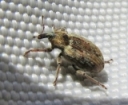
Despite this cold, wet spring, which has delayed planting and other farming efforts across NY, our pests and diseases continue to rear their ugly heads. This serves as a reminder that we need to continue to be vigilant with our scouting efforts for early detection of pests to make sound management decisions.
Creating Consumer-Friendly Bulk Meat Sales
Amy Barkley, Team Leader & Livestock Specialist
Southwest New York Dairy, Livestock and Field Crops Program

With uncertainty in meat markets for both producers and consumers alike, there has been a transition by some livestock producers to the direct marketing sector. For those already direct marketing, many have noticed a marked increase in the number of new customers for local meats. These opportunities do come with a set of rules and regulations to follow as well as tips to help make first-timers customers for life. Cornell Cooperative Extension has partnered with Ag Marketing Consultant, Matt LeRoux, to share "how to" tips on getting started with bulk meat sales. The recording of the original presentation, shared on May 4th and 13th, can be found on the Cornell Beef Blog at http://blogs.cornell.edu/beefcattle/producer-resources/creating-consumer-friendly-bulk-meat-sales/.
Soil Temperatures and Insect Captures Remain Low in Southwest New York
Joshua Putman, Field Crops and Forage Specialist
Southwest New York Dairy, Livestock and Field Crops Program

As daytime temperatures struggle to get above 50 F and nighttime temperatures falling below freezing, soils in Southwest NY are warming at a slow pace. Average soil temperatures across the SWNY region ranged from 42-56 F. Black cutworm and true armyworm moth counts also remain low as Avoca, NY had 0 black cutworm and 2 armyworm. Springville, NY location had 2 black cutworm and 3 armyworm moths in the traps. Weekly monitoring of these pests will continue and as temperatures continue to rise, we need to be scouting our fields for potential larvae. Contact Field Crop Specialist, Josh Putman, with the SWNY Dairy, Livestock, and Field Crops team for correct pest identification. For additional information, see the Crop Alert provided by the NWNY Diary, Livestock and Field Crops team.
A Glimmer Of Hope for Beef Producers
Amy Barkley, Team Leader & Livestock Specialist
Southwest New York Dairy, Livestock and Field Crops Program

On May 11, Derrell Peel with Oklahoma State University Extension provided a marketing update indicating that nationwide, beef plants are recovering capacity, albeit slowly. More locally, this is echoed by JBS Souderton's return to buying both cows and cattle, with plans to soon increase production. State auction prices are starting to come up across types of cattle, reflecting the increased demand.
Caught! Black Cutworm and True Armyworm Moths Making Their Way into Southwest Ne
Joshua Putman, Field Crops and Forage Specialist
Southwest New York Dairy, Livestock and Field Crops Program

Black cutworm and True armyworm are problematic insects that can significantly cause damage here in New York. We are working to monitor these moths as they enter the region.
It's That Time of Year - Managing to Prevent Grass Tetany

Grass tetany, or hypomagnesemia, is a potentially fatal condition classified by low blood magnesium and is exacerbated by the consumption of low-magnesium forages. This article written by Dr. Mike Baker further explains the biology, risk factors in both animals and pastures, and practical prevention methods.
Considerations for Slowing Feedlot Cattle Growth
Amy Barkley, Team Leader & Livestock Specialist
Southwest New York Dairy, Livestock and Field Crops Program

Considerations for Slowing Feedlot Cattle Growth, by Iowa State University and University of Wisconsin
Iowa State University Extension Beef Specialists, Iowa Beef Center University of Wisconsin Extension Livestock Program Educators, and University of Wisconsin Department of Animal Science Faculty have been evaluating the cattle markets, and what options producers have for their cattle at a time when beef prices are low and slaughter and processing capacities are down. Although not ideal, one choice may be to slow the rates of finishing cattle growth in an effort to wait for the market to turn around. This article details ways to do this for cattle at different stages, based on the goals of the operation. The overarching goal is to slow growth effectively without a heavy financial burden or causing negative effects on the finished carcass.
Cornell Pesticide Management Education Program
Joshua Putman, Field Crops and Forage Specialist
Southwest New York Dairy, Livestock and Field Crops Program
Along with the increased use of disinfectants and sanitizers during the COVID-19 pandemic,
there has been an increase in adverse health effects from the misuse of these
products. There have also been several fraudulent products produced during this
time that potential applicators should be made aware of.
Beef Market Update, April 16th, 2020
Amy Barkley, Team Leader & Livestock Specialist
Southwest New York Dairy, Livestock and Field Crops Program

On April 16, 2016, Dr. Mike Baker, Betsy Hodge, and Bill Bullock shared a marketing update for the beef industry. At this time, the industry is reporting revenue losses and decreased capacity for processing in response to decreased demand and the implementation of measures which safeguard employee health. For those who have cattle which are ready for market, recommendations for different classes of cattle were discussed.
For the latest NYS beef cattle market information, visit the Cornell Beef Management website: https://blogs.cornell.edu/beefcattle/market-information/.
Traps being set in Southwest New York
Joshua Putman, Field Crops and Forage Specialist
Southwest New York Dairy, Livestock and Field Crops Program

Black cutworm and True armyworm traps are being set throughout Southwest NY to monitor moth flights from the south as well as the west. These can be very problematic to field crop and hay producers and it is important to monitor your fields before they cause economic damage. Recently, other Extension Specialists have caught True armyworm moths and we will continue to monitor the traps that are being placed in SWNY.
USCIS Gives H-2A Workers Temporary Flexibility to Stay and Work Longer
Alycia Drwencke, Dairy Management Specialist
Southwest New York Dairy, Livestock and Field Crops Program

Cornell Agricultural Workforce Development has shared some of the key excerpts on H-2A updates. Notice was published in the Federal register on Monday that gives H-2A workers temporary flexibility to stay and work longer in the United States.
Face Covering Required for Essential Workers With Direct Public Contact
Katelyn Walley, Business Management Specialist and Team Leader
Southwest New York Dairy, Livestock and Field Crops Program

"For all essential businesses or entities, any employees who are present in the workplace shall be provided and shall wear face coverings when in direct contact with customers or members of the public. Businesses must provide, at their expense, such face coverings for their employees. This provision may be enforced by local governments or local law enforcement as if it were an order pursuant to section 12 or 12-b of the Public Health Law. This requirement shall be effective Wednesday, April 15 at 8 p.m."
5-Point Checks for Small Ruminants
Amy Barkley, Team Leader & Livestock Specialist
Southwest New York Dairy, Livestock and Field Crops Program

Internal parasites are a common problem for small ruminants. No matter the production system, time of year, or breed, it is fair to say that all small ruminants have a parasite load to some extent. A 5-point check is a comprehensive analysis of an animal's condition to determine if it is exhibiting signs related to a potential high internal parasite load, using an evaluation at 5 points over the animal's body. Not all animals will exhibit all signs, so a combination of the intensity of the signs present and experience can help producers make timely management decisions.
How warm are your soils? Things to consider prior to planting
Joshua Putman, Field Crops and Forage Specialist
Southwest New York Dairy, Livestock and Field Crops Program
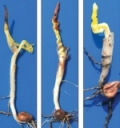
Selection of optimal planting date is one of the most critical factors in the decision making process for producers. When making this decision, producers should consider soil temperatures rather than just calendar dates. How warm are your soils?
NYS DEC delays enforcement of the pesticide certification period
Joshua Putman, Field Crops and Forage Specialist
Southwest New York Dairy, Livestock and Field Crops Program

Pesticide Certification and Business Registration during Pause-NY: DEC is taking the following actions to temporarily allow regulatory flexibility and continued pesticide application and business operations during Pause-NY due to the unique conditions facing New York and the entire nation.
Reliable Resources for Spanish- & English-Speaking Farmworkers about COVID-19

Libby Eiholzer, CCE Northwest NY Dairy, Livestock & Field Crops Team, and Richard Stup, Cornell Agricultural Workforce Development have compiled reliable resources for farm workers on COVID-19 in both English and Spanish.
Scout your hay fields to assess winter annual weed pressure
Joshua Putman, Field Crops and Forage Specialist
Southwest New York Dairy, Livestock and Field Crops Program

Alfalfa and grass hay stands are greening up across Southwest NY and all across Western NY over the last 10 days. Recently, Field Crops Specialist Josh Putman with the SWNY Dairy, Livestock, and Field Crops Team, has been out monitoring fields for potentially damaging pests in hay production fields. Winter annual weeds are being seen in high numbers and even more so in older hay stands.
Don't send cows to market that are not fit to transport, Dr. Mike Baker
Alycia Drwencke, Dairy Management Specialist
Southwest New York Dairy, Livestock and Field Crops Program

Dr. Mike Baker, Cornell Beef Extension Specialist, reminds us to check for fitness of transport prior to sending cattle to market in his blog. Included are links to useful resources for determining fitness for transport, such as a checklist developed by Dr. Baker and Rob Lynch, DVM, PRO-DAIRY.
Impact of Beef Processing Plant Closures
Amy Barkley, Team Leader & Livestock Specialist
Southwest New York Dairy, Livestock and Field Crops Program
Impact of Beef Processing Plant Closures, written by Dr. Mike Baker
In response to the COVID-19 pandemic, large processing plants servicing NY beef producers have made changes to allocations of which and how many beef animals are harvested to meet current consumer demand. As of Monday, March 30th, positive tests among plant workers have resulted in a temporary closure of one of the region's most prominent processing plants, JBS, in Souderton, PA. In response, Dr. Mike Baker of Cornell University wrote this article, which explores what this means for farmers, while giving recommendations of best management practices to get producers through this transition period. Read the full article here.
Biosecurity for People: 7 Steps to Protect Farm Workers from COVID-19

Mary Kate Wheeler, Farm Business Management Specialist with the South Central NY Dairy & Field Crops Team, shares 7 tips for protecting your farm employees from COVID-19 in her latest blog post.
Traps being set for black cutworm and armyworm - Watch your fields!
Joshua Putman, Field Crops and Forage Specialist
Southwest New York Dairy, Livestock and Field Crops Program
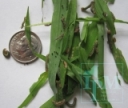
True armyworm (aka Common armyworm) is a problem in agronomic and turf production systems here in New York. They do not overwinter in New York, but fly north from states to our south in the spring. Armyworm moth migrations are somewhat sporadic, cyclic from year to year, and difficult to predict. We are gearing up to set traps throughout the region to help growers predict the potential risk of armyworm infestation in wheat and corn this spring.
Online Quality Assurance Trainings for Beef, Sheep, and Pork Are Available!
Amy Barkley, Team Leader & Livestock Specialist
Southwest New York Dairy, Livestock and Field Crops Program

While in-person certification classes may be postponed for the time being, opportunities to take online certification trainings in sheep, beef, and pork quality assurance are available!
Achieving a better price for you beef or dairy feeder cattle, Dr. Michael Baker

Recently, Dr. Michael Baker, Cornell University Beef Extension Specialist, shared some ideas on how you can add value to your calves. The full report can be found here.
COVID-19 and Your Dairy Webinar
Alycia Drwencke, Dairy Management Specialist
Southwest New York Dairy, Livestock and Field Crops Program

Richard Stup, PhD, Cornell Agricultural Workforce Development, and Rob Lynch, DVM, Cornell CALS PRO-DAIRY hosted a webinar recently discussing COVID-19 and Your Dairy, which is now available online with additional resources.
Video describing COVID-19 in Spanish

The Cornell Farm Worker Program has put together a video describing COVID-19 in Spanish.
NY FarmNet Continues to Offer Free Services - Call 1-800-547-3276
Katelyn Walley, Business Management Specialist and Team Leader
Southwest New York Dairy, Livestock and Field Crops Program
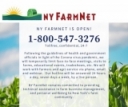
NY FarmNet is continuing to support our agricultural producers through free and confidential consultations.
Formulating Rations with Pearson Squares
Amy Barkley, Team Leader & Livestock Specialist
Southwest New York Dairy, Livestock and Field Crops Program
When formulating simple diets for any species, using the Pearson Square method can be of assistance. This system uses a pen, paper, and series of ratios to help determine the mix of two feed ingredients to meet the nutrition goal set for a certain nutrient. Multiple Pearson squares can be used together to help producers formulate simple diets.
Ration Balancing for Beef Cattle
Amy Barkley, Team Leader & Livestock Specialist
Southwest New York Dairy, Livestock and Field Crops Program

Beef nutrition is more than just providing the cattle with feedstuffs. Testing forages and ration balancing with the help of a nutritionist and/or nutrition calculators can help develop a diet which can improve rates of gain, body condition, finishing quality, and result in an animal that is more ideally suited for market.
Elements of IPM for Dairy and Beef Cattle by Ken Wise & Keith Waldron

Ken Wise and Keith Waldron, with the New York Integrated Pest Management Program share useful resources for incorporating IPM on your farm. IMP can be used to help control fly populations on dairy and beef cattle farms.
New York Beef Producers' Association Regional Meetings Have Been Scheduled
Amy Barkley, Team Leader & Livestock Specialist
Southwest New York Dairy, Livestock and Field Crops Program
The New York Beef Producer's Association has scheduled their regional meetings. Meetings will include a lunch or dinner, business meeting, and presentations on timely beef industry topics. Membership in the NYBPA isn't required to attend the meetings.
Region 2: Cattaraugus and Chautauqua Counties - Saturday, March 14th
Region 1: Erie County - Monday, March 16th
Region 4: Allegany and Steuben Counties - Saturday, March 28th
Corn Diseases in Southwest NY
Joshua Putman, Field Crops and Forage Specialist
Southwest New York Dairy, Livestock and Field Crops Program

2019 was a year for many diseases. Here are a few things to keep in mind going into the 2020 growing season!
CORE Pesticide Training & NYSDEC Exam 2020
Katelyn Walley, Business Management Specialist and Team Leader
Southwest New York Dairy, Livestock and Field Crops Program

3.0 pesticide recertification credits in the CORE category have been officially approved for this event. Attend a CORE Pesticide training and register to take your NYSDEC Exam. Participants looking to receive their applicators license must have experience working on their own farm, or through employment on another farm. March 26th - Jamestown. April 2nd - Bath
You Don't Say...By Timothy X. Terry, Harvest NY

Learn more about hiring a contractor for your farm project from Timothy X. Terry of Cornell Cooperative Extension's Harvest NY program.
An Update from SWNYDLFC
Katelyn Walley, Business Management Specialist and Team Leader
Southwest New York Dairy, Livestock and Field Crops Program

Since July 1st, 2019, our new program has been busy with on-boarding, needs assessment, educational programming, and getting the chance to meet some of our region's amazing farmers. We've hired four specialists that are on-board and ready to hit the ground running in the specialty areas of Farm Business Management, Field Crops, Dairy Management, and Livestock. We're working with each of our five county associations' Executive Directors, Board of Directors, Program Committees, and Agriculture Program Staff to get to know the region and its programming needs while introducing this collaborative model of dairy, livestock, and field crops outreach.
Reducing the Risk of Compaction When Grazing Cover Crops
Nancy Glazier, Small Farms & Livestock Specialist
Northwest New York Dairy, Livestock & Field Crops

The benefits of cover crops have been known for many
years; one is remediating compaction.
African Swine Fever
Katelyn Walley, Business Management Specialist and Team Leader
Southwest New York Dairy, Livestock and Field Crops Program

African Swine Fever (ASF) is a viral disease that is rapidly spreading across Europe and Asia - with potential to affect the North American Swine Industry and have crippling economic impacts.
Beef Farm Account Book Available!
Katelyn Walley, Business Management Specialist and Team Leader
Southwest New York Dairy, Livestock and Field Crops Program

The Cornell Beef Farm Account Book is once again available. This accounting record book is designed specifically for beef producers. A complete and accurate set of financial records helps producers develop accurate tax returns but as important gives them the data to analyze their business.
Confidently Hosting a Farm Tour - Part One - What's Your "Why Bother" ?
Katelyn Walley, Business Management Specialist and Team Leader
Southwest New York Dairy, Livestock and Field Crops Program

We've been approached by many agricultural producers who are interested in hosting a farm tour, but are unsure of where to start. Our hope is that this article series will help our agricultural community share the stories of their farms, and feel confident while doing so.
Upcoming Events
Boots in the Barn: Cornell Dairy Research Updates
January 13, 2026
January 20, 2026
January 27, 2026
February 3, 2026
February 10, 2026
February 17, 2026
February 24, 2026
Advanced Hoof Health Program
January 15, 2026
Belfast, NY
NY Pork Producers Connection Breakfast - Geneseo
January 17, 2026 : Pork Producers Connection Breakfast - Geneseo
Geneseo, NY
Announcements
No announcements at this time.





